The Bermuda Triangle is an area of the Atlantic Ocean approximately 1.5 million square miles in size and is defined as the area between Bermuda (northern point), Puerto Rico (southern point) and Miami (western point). The Bermuda Triangle earned its mysterious reputation from numerous unexplained disappearances of ships and planes.
For the record, I have been on numerous ships that have sailed through the Bermuda Triangle and numerous airplanes that have flown over the Bermuda Triangle and I have never seen anything unusual. Now that I have that out of the way I can get on with the topic of this post which is about “Snorkeling in the Bermuda Triangle”.
I have snorkeled in all three of the vertices the Bermuda Triangle but this post is specifically about snorkeling in the northern point of Bermuda. I will have future post on my snorkeling in the other two locations.
About Bermuda’s coral reefs
Bermuda’s coral reefs are located at 32°N making the reefs the most northern coral reefs in the Atlantic Ocean. Corals thrive in clean clear warm water and prefer temperatures between 77-85° F.
The islands of Bermuda are located approximately 1,400 miles east of Charleston, South Carolina which is well north of the normal region for coral reefs. The constant supply of clean warm water from the Gulf Stream allows coral to proliferate much farther north than they otherwise would be able to live.
Even with the Gulf Stream warming the waters around Bermuda, the water temperature is not ideal for coral growth. The Bermuda average monthly water temperatures range from 68° F in the winter to 83° F in the summer. Due to the lower winter temperatures than in the Caribbean, Bermuda’s reefs have only about 1/3 of the species of hard corals found in the Caribbean. However, those species that can tolerate the lower winter temperatures do very well and Bermuda has high rates of coral coverage.
Fish that live on Bermuda’s reef
There are 469 species of fish that have been seen in Bermuda. I snorkeled twice in Bermuda and photographed 32 species but I only had quality photos of 27 of those species. The reef fish that I had a decent enough photo to share in this post are:
Butterflyfish
Banded Butterflyfish
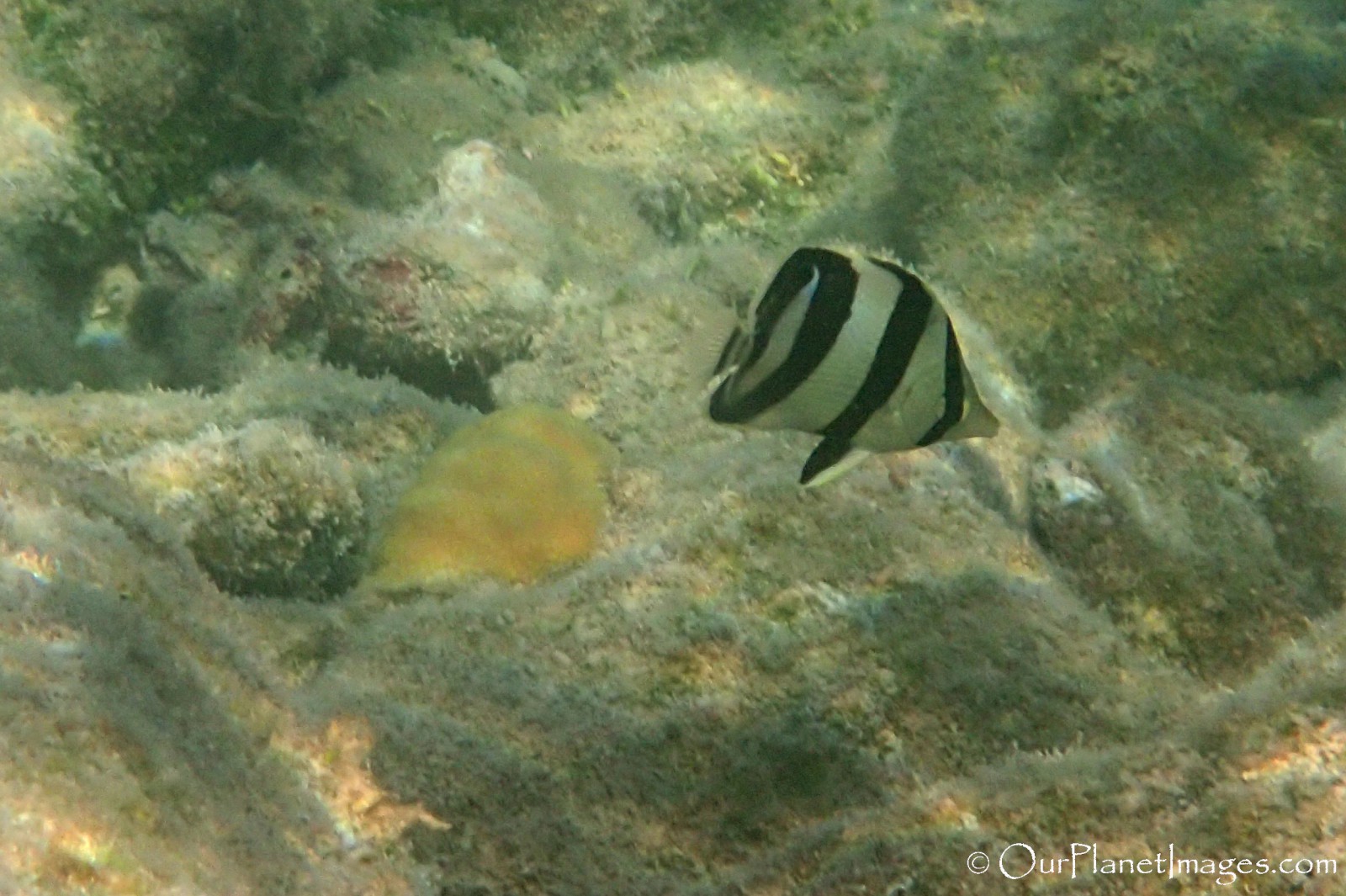
Foureye Butterflyfish

Spotfin Butterflyfish
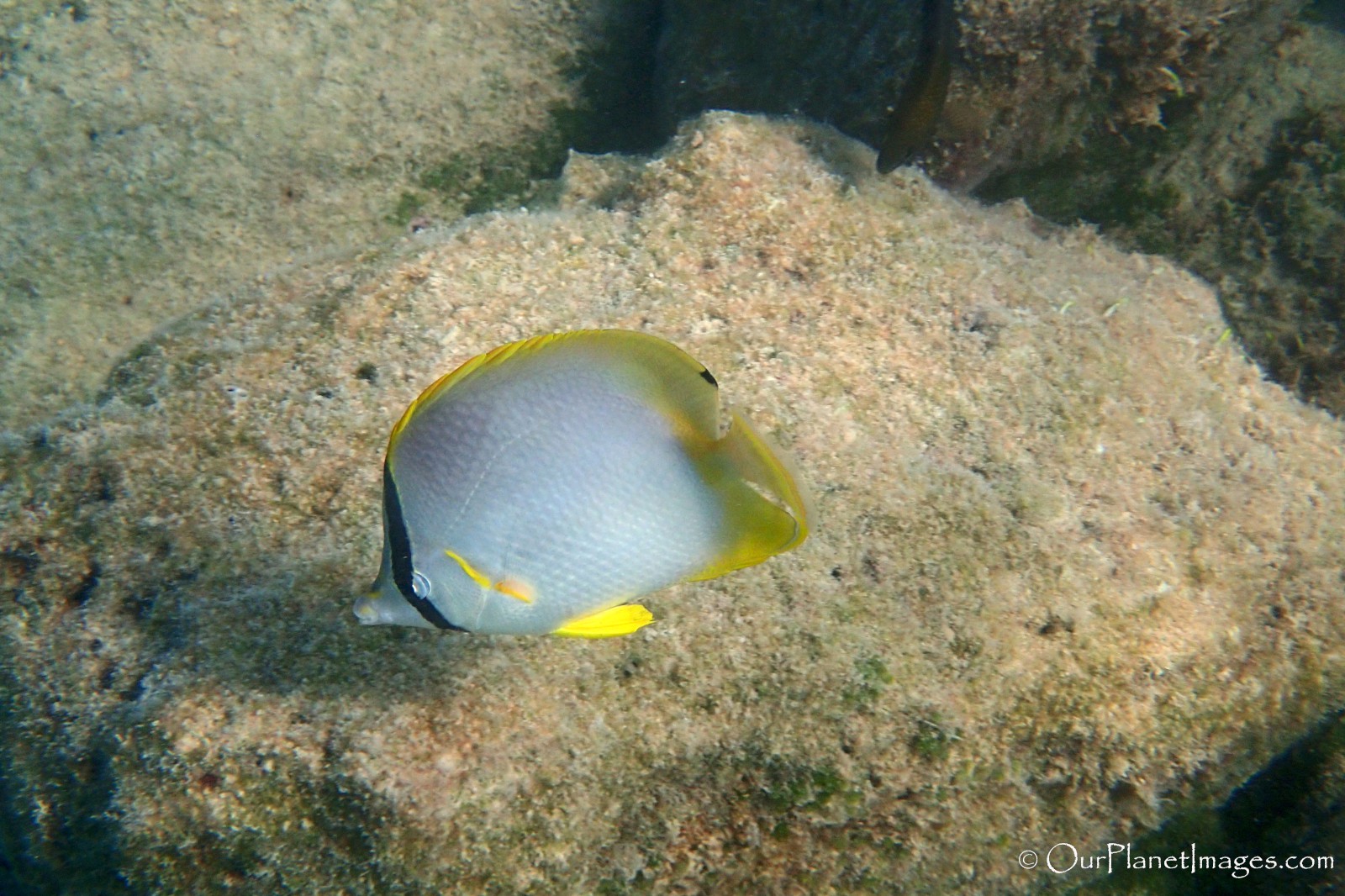
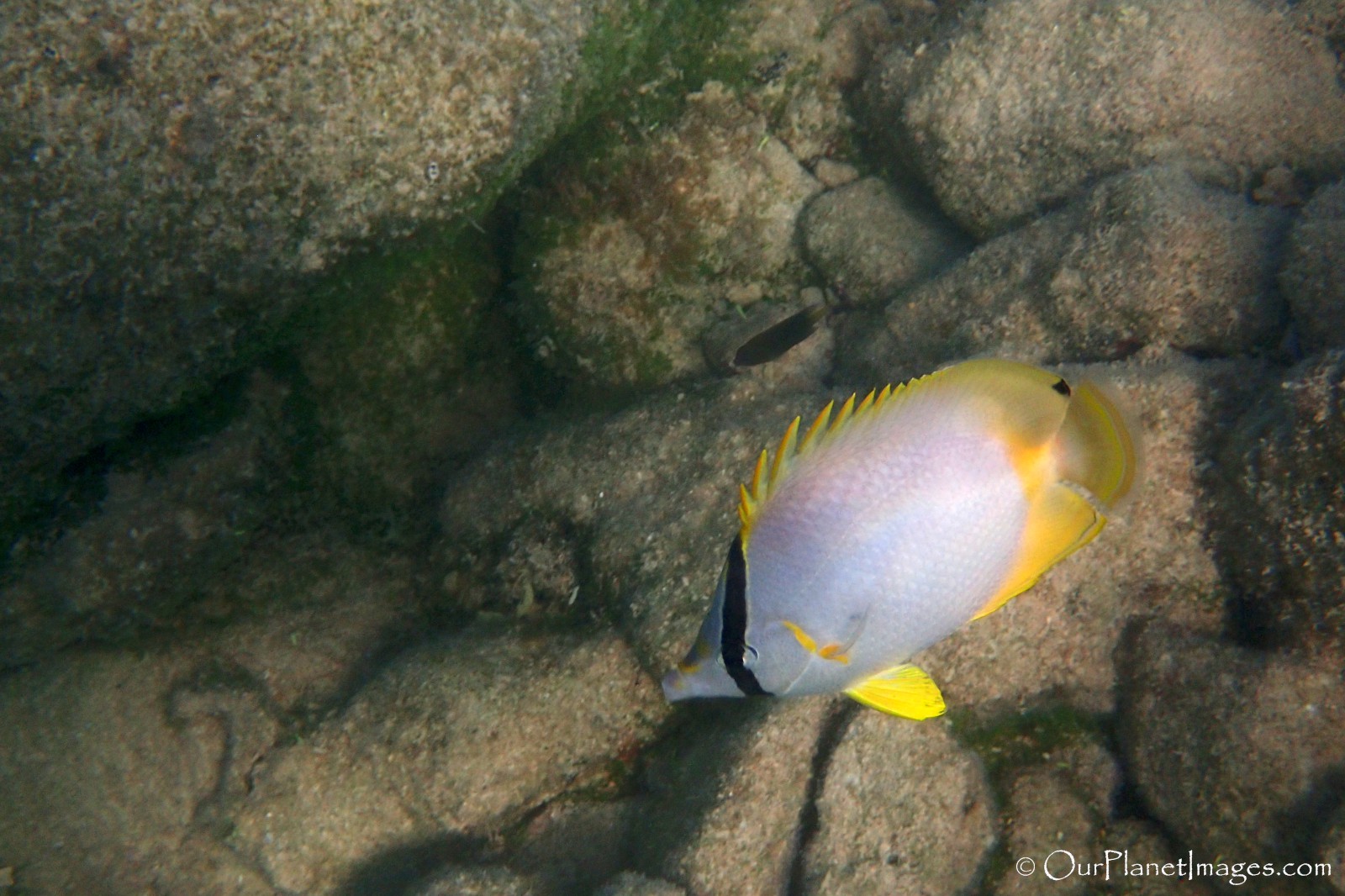
Bream
Bermuda Bream
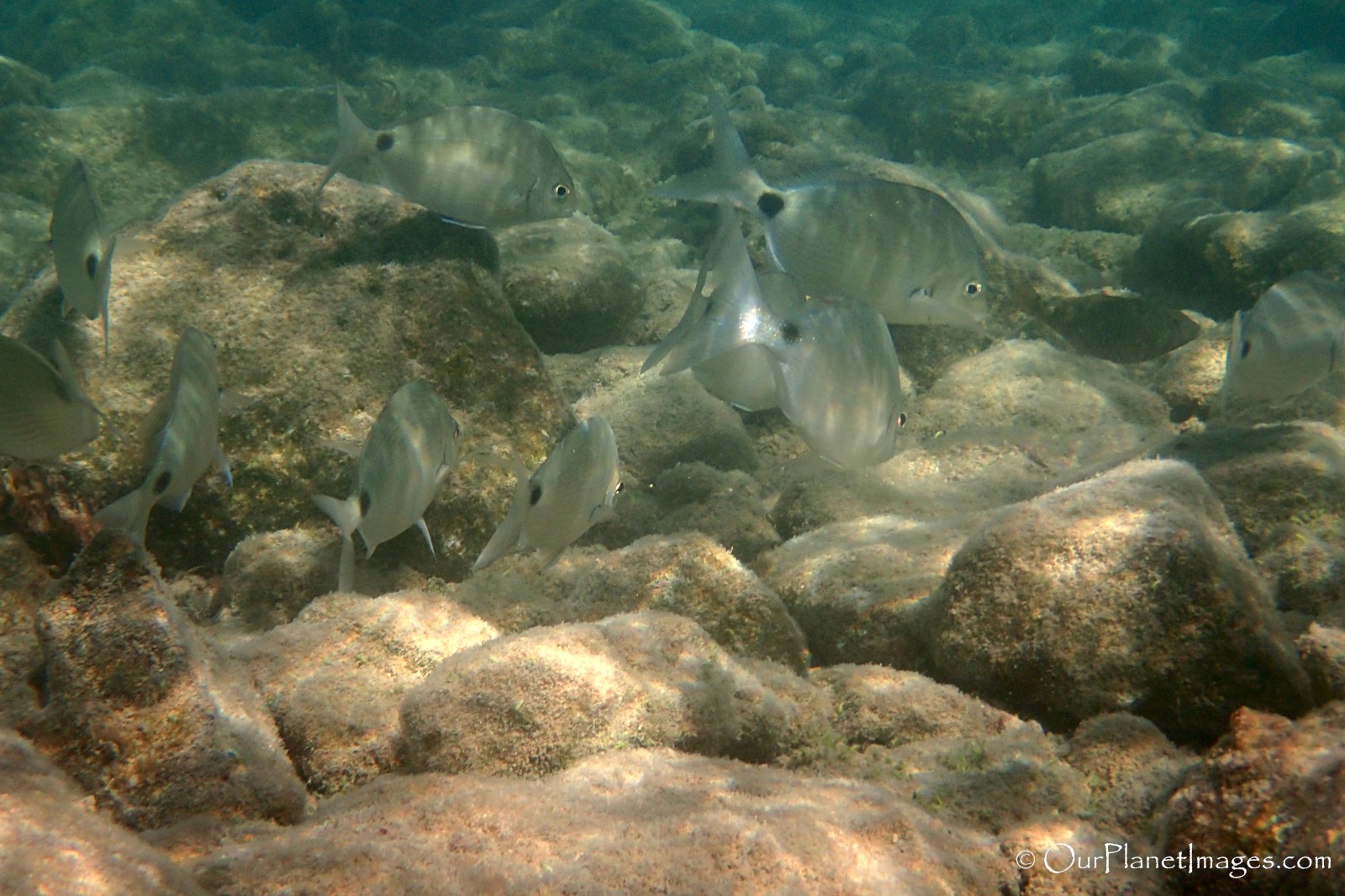
Chub
Bermuda Chub
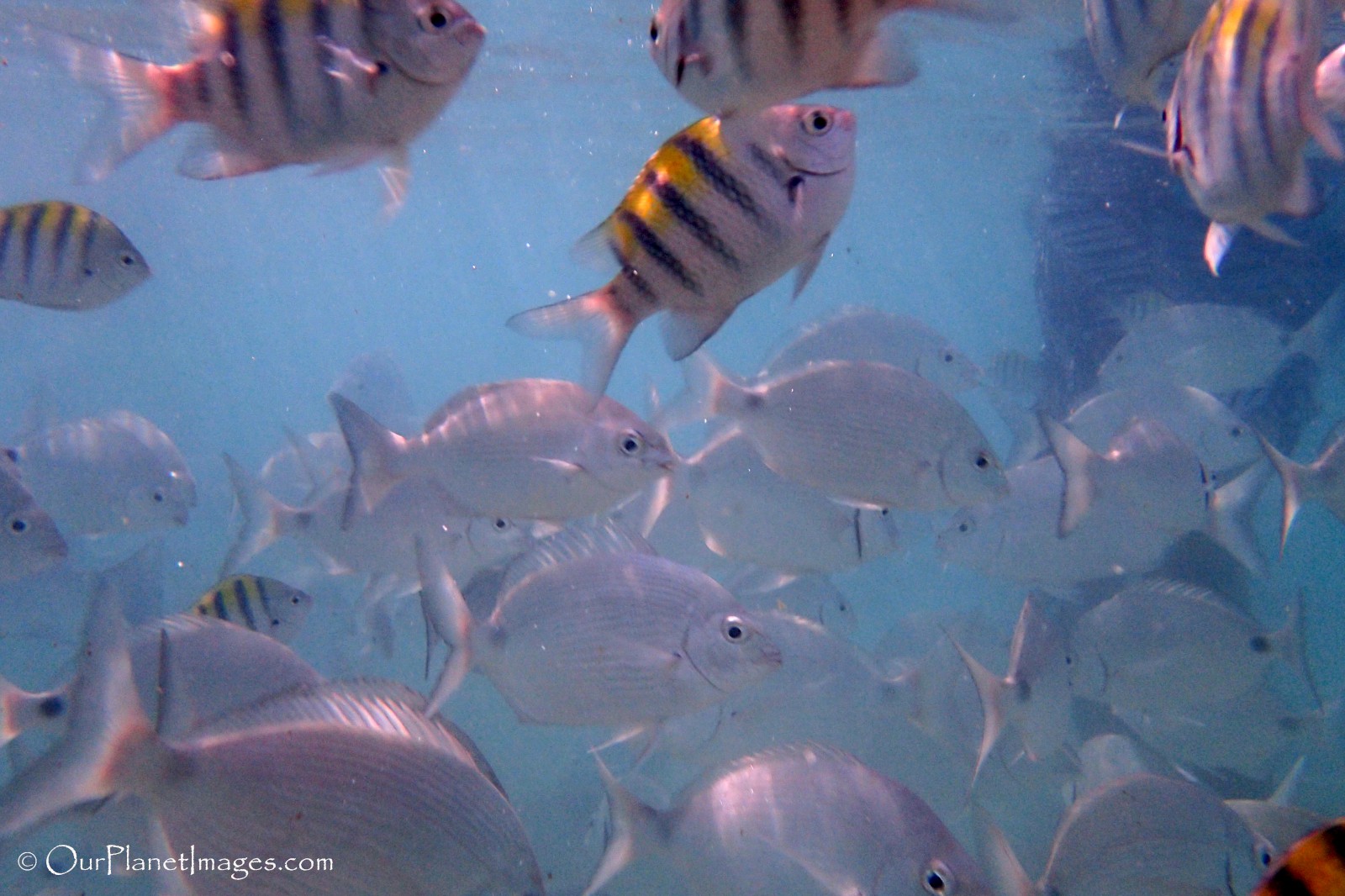
Grunt
Bluestrip Grunt
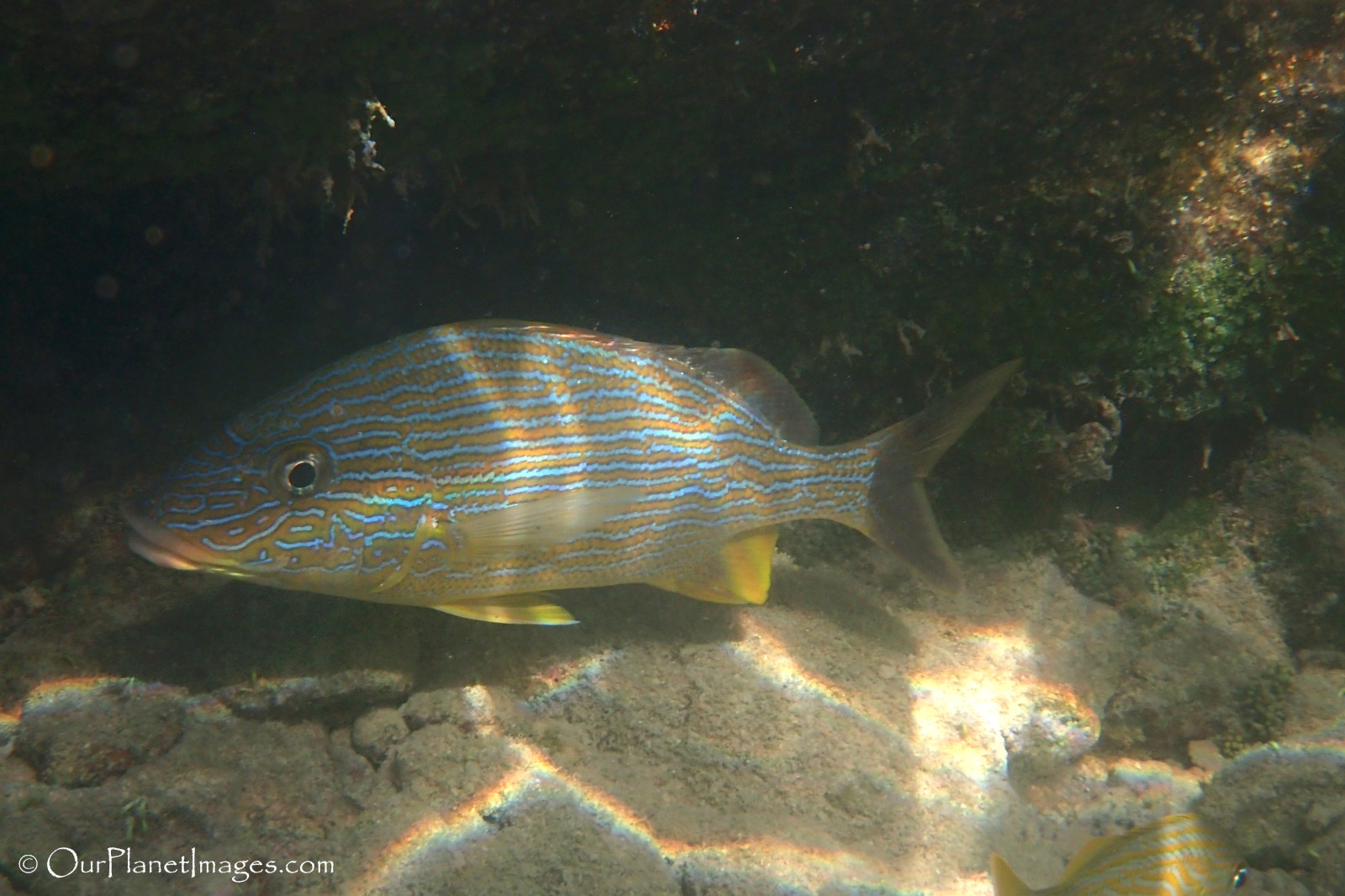
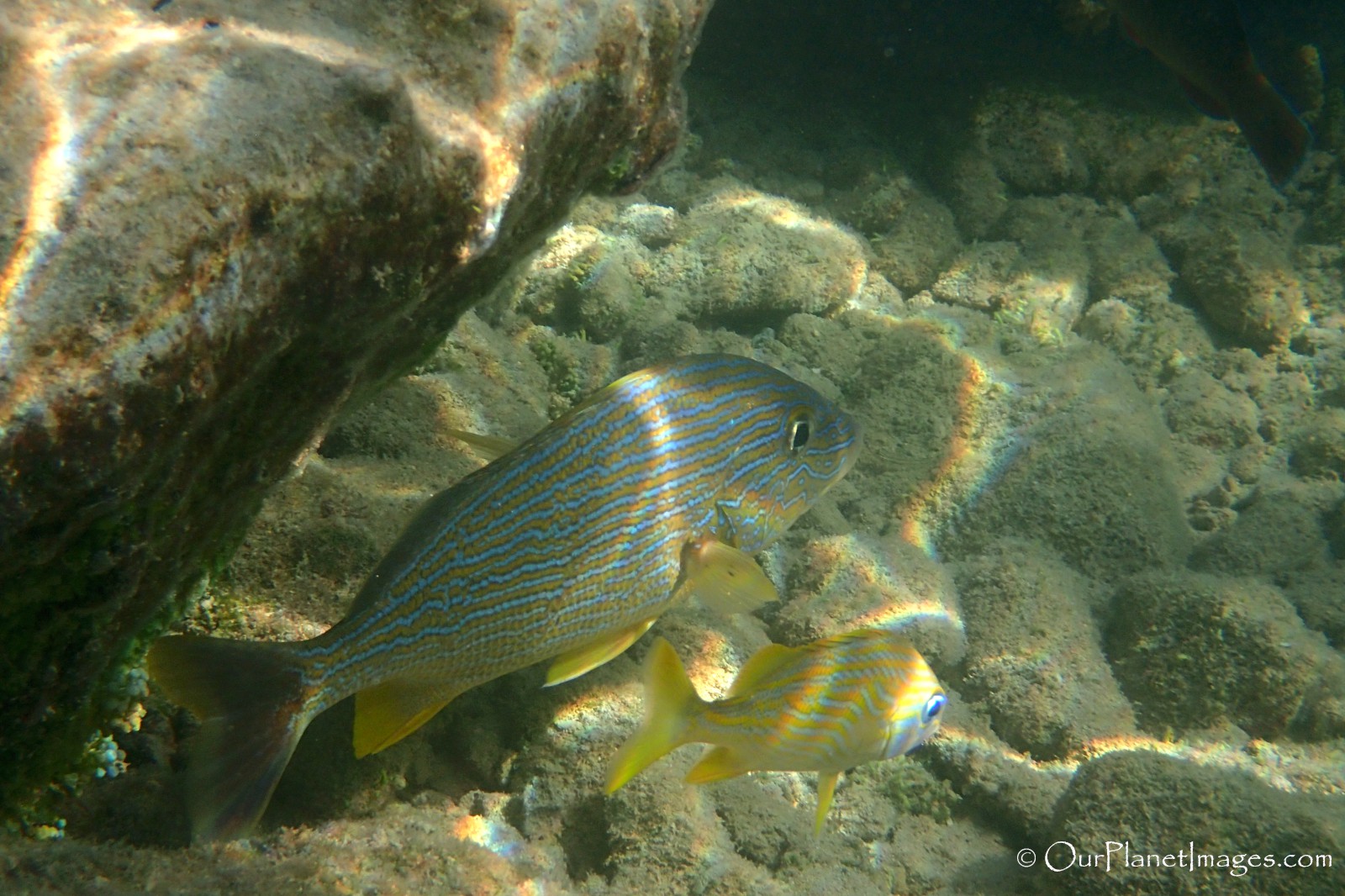
French Grunt

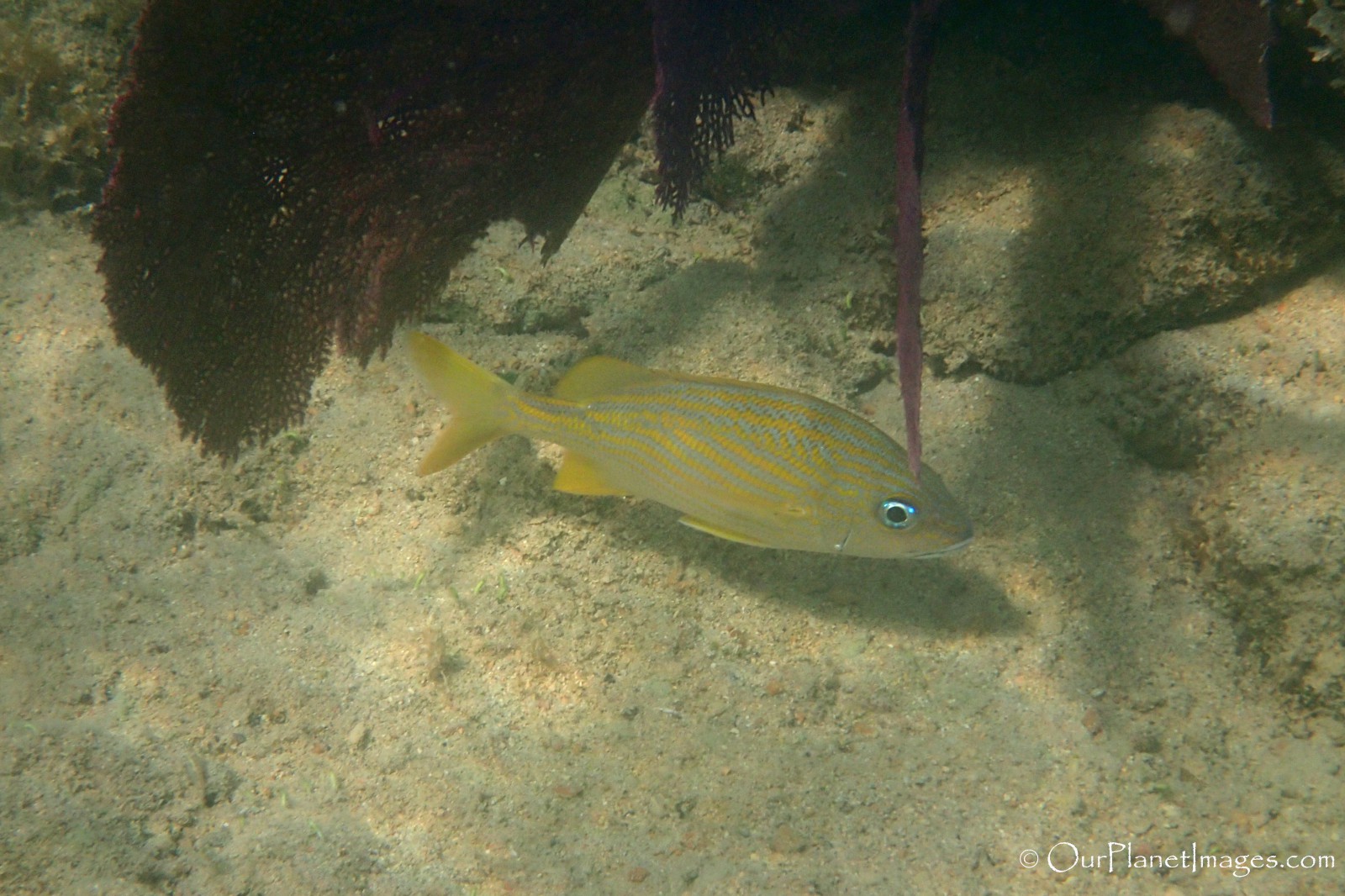
Tomate Grunt

Surgeonfish
Blue Tang
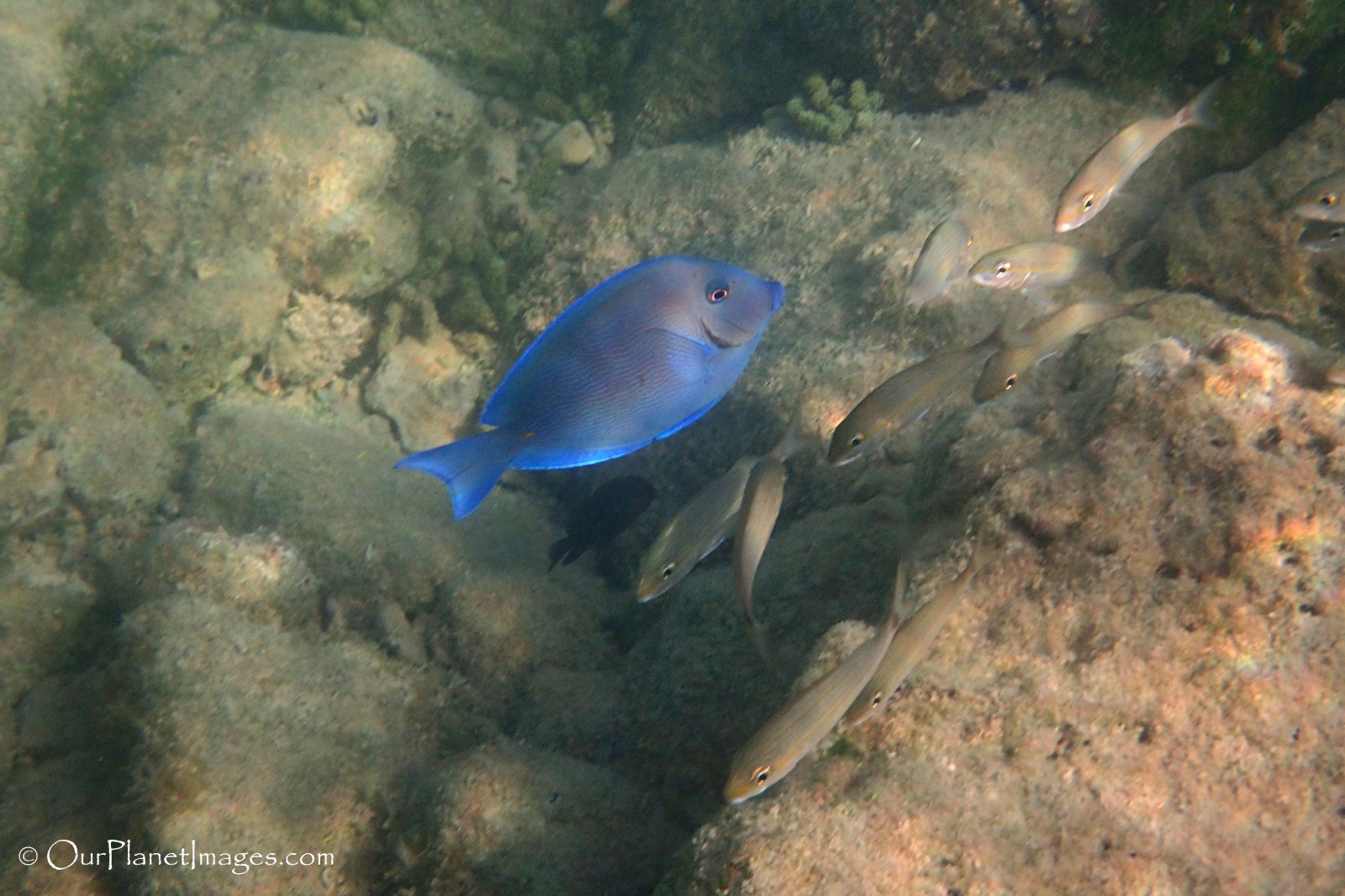
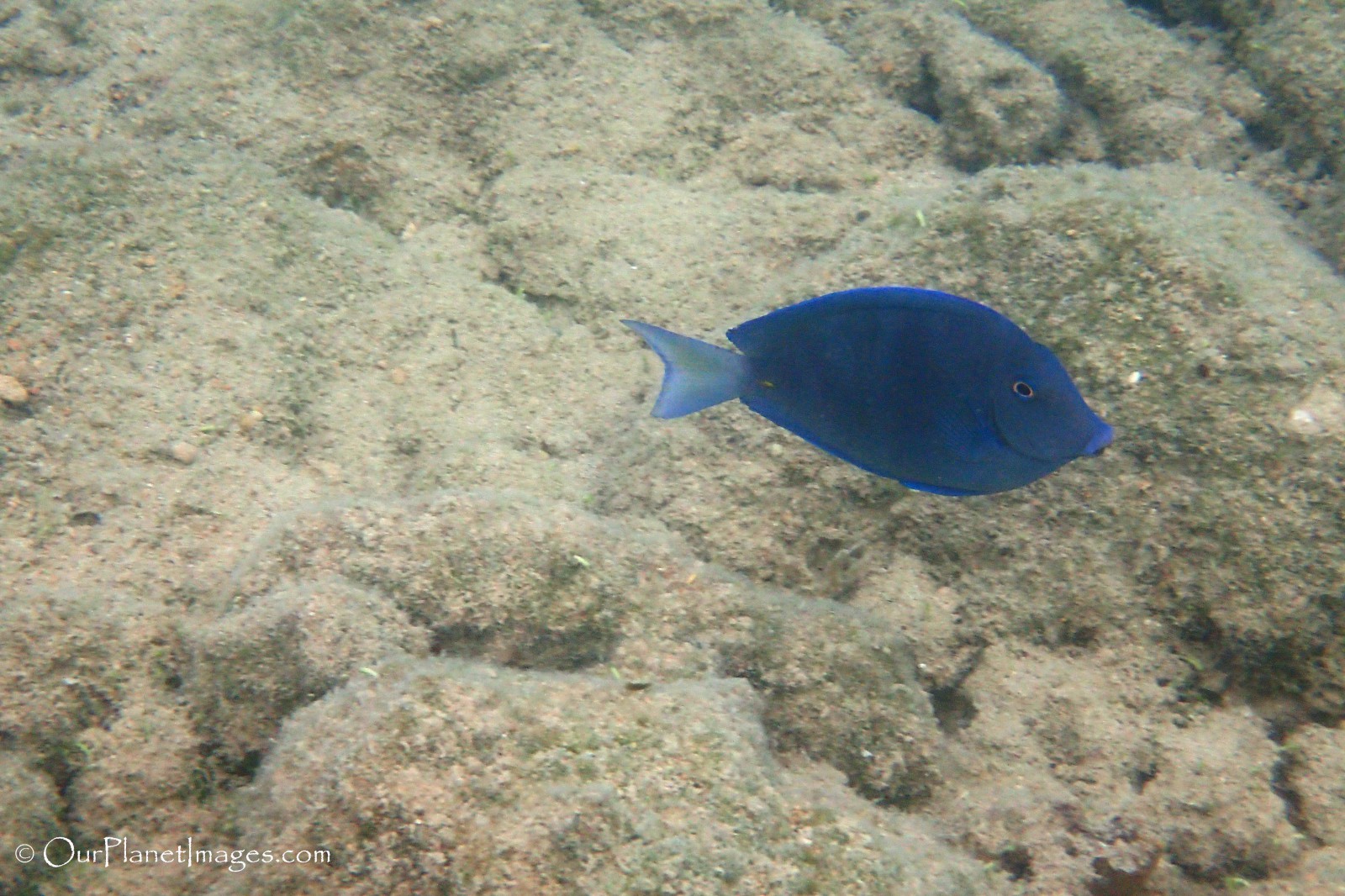
Doctorfish
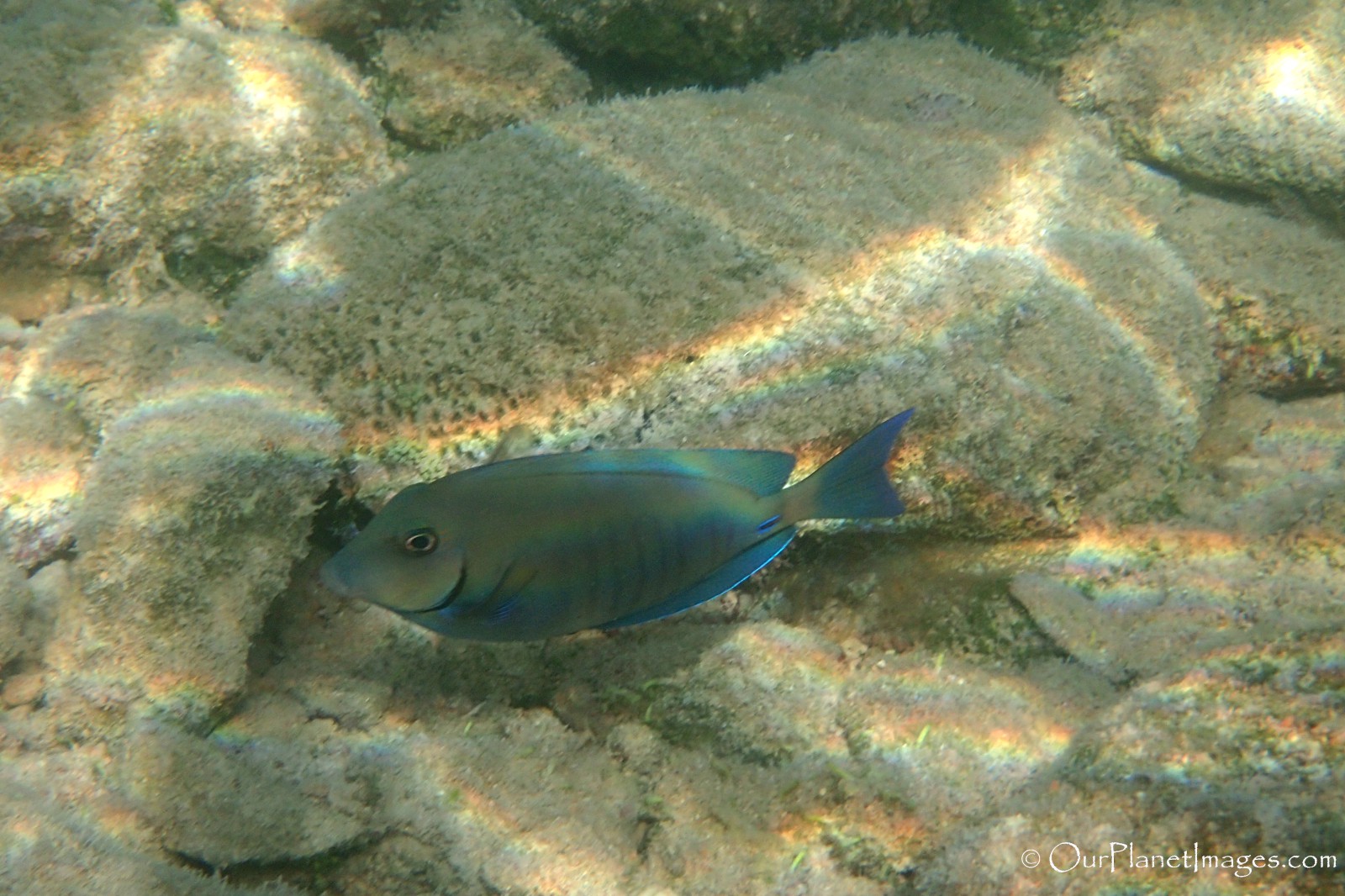
Ocean Surgeonfish
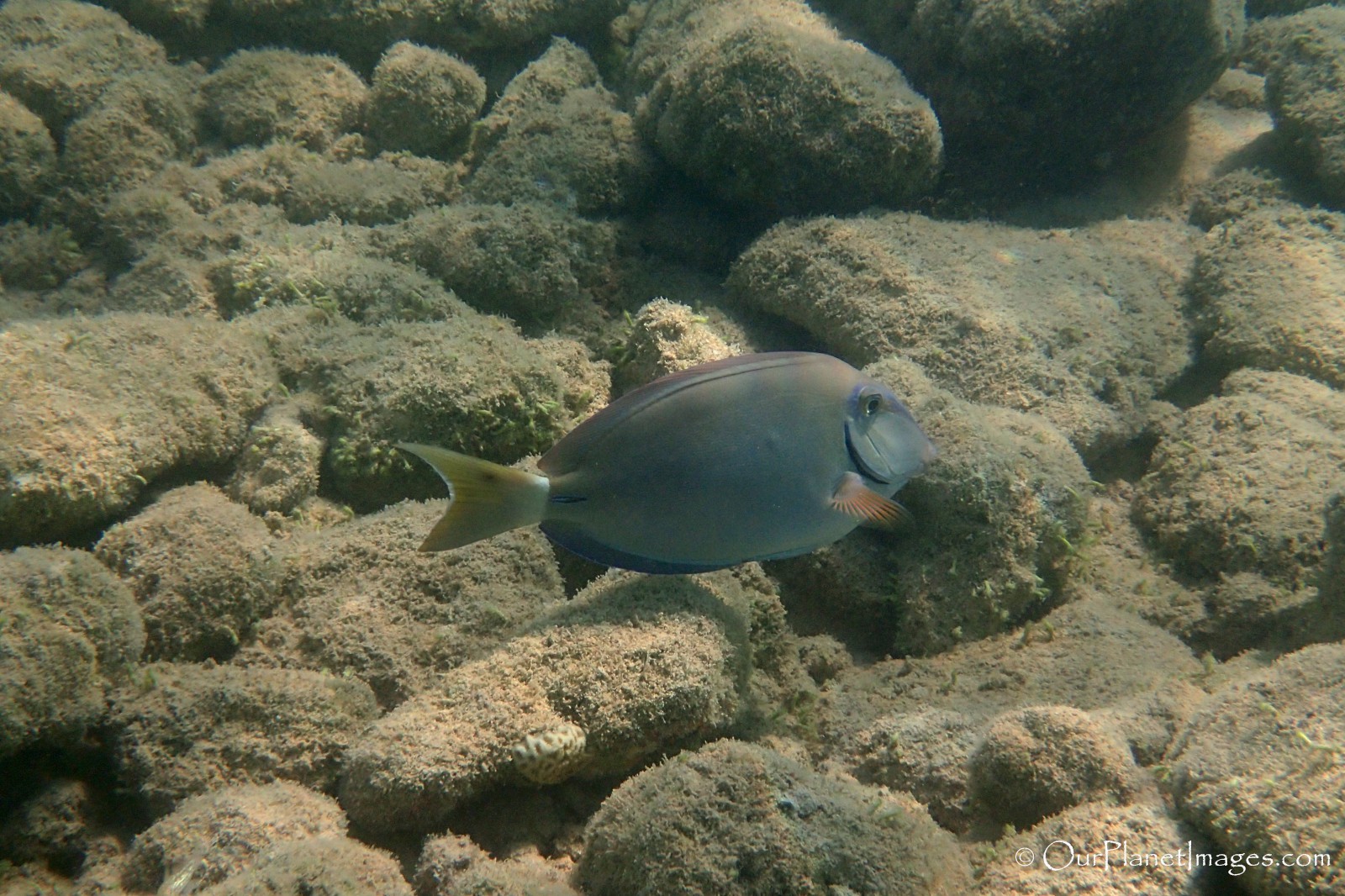
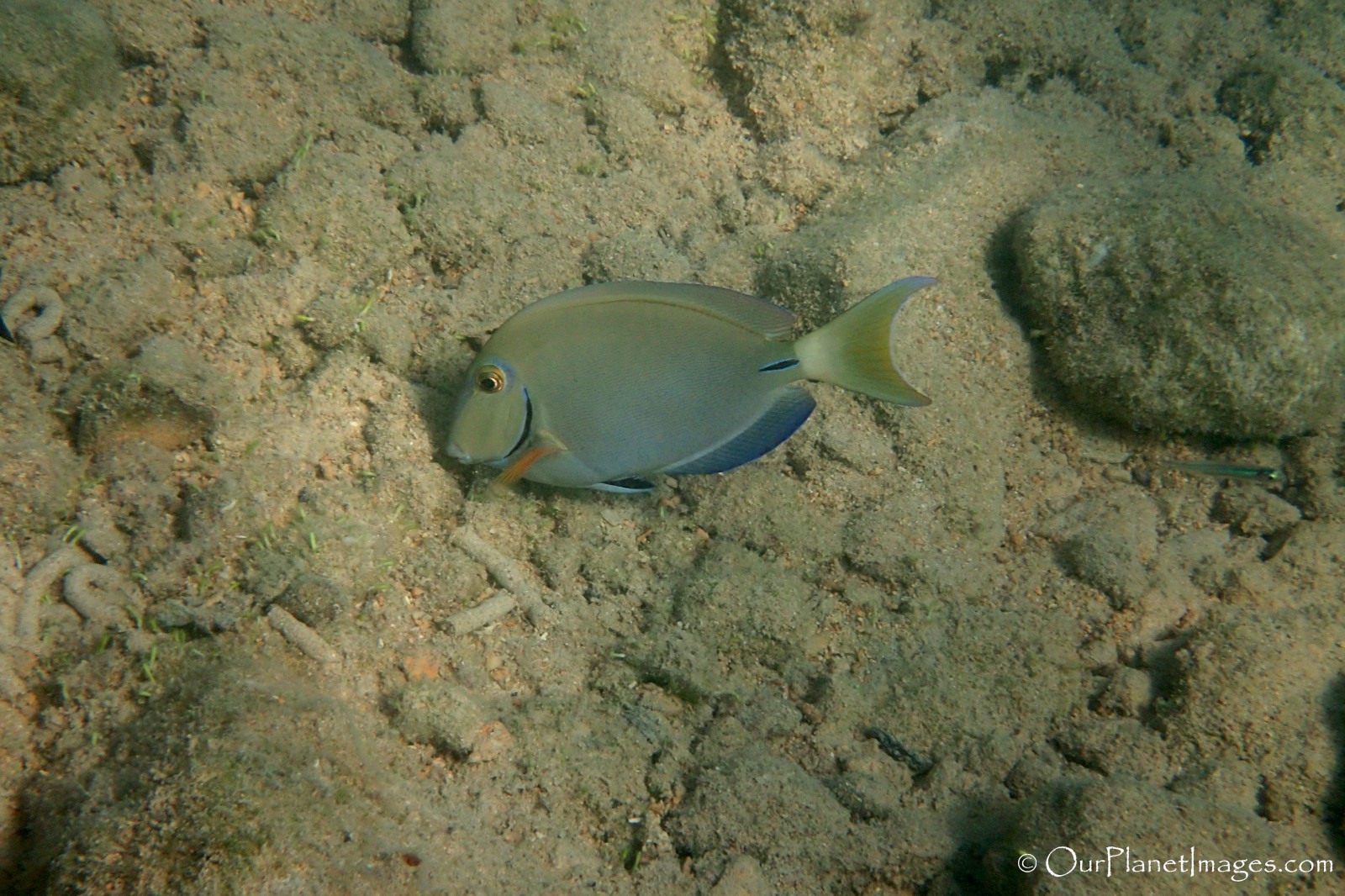
Goby
Neon Goby

Grouper
Red Hind Grouper
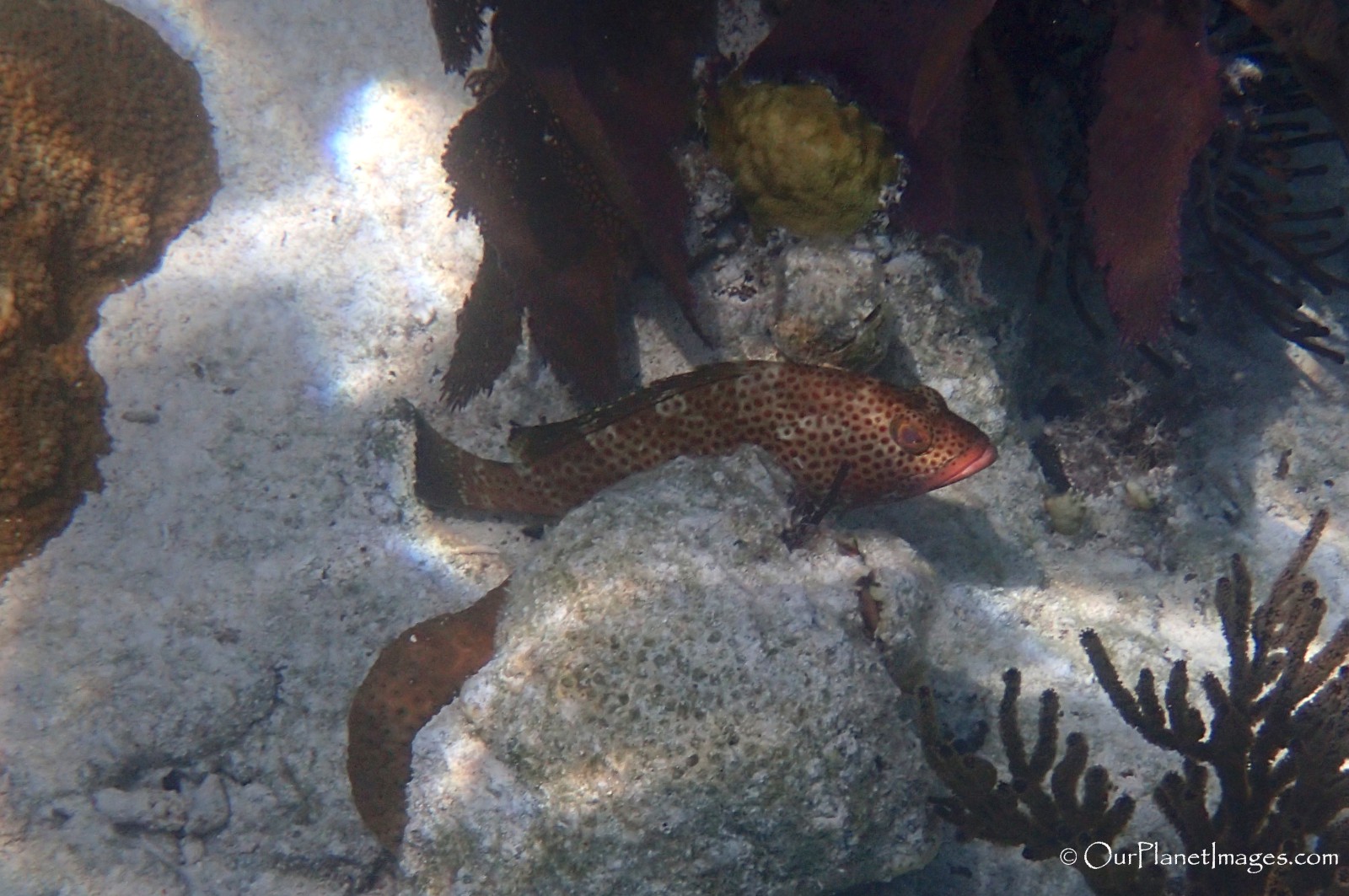
Mullet
White Mullet
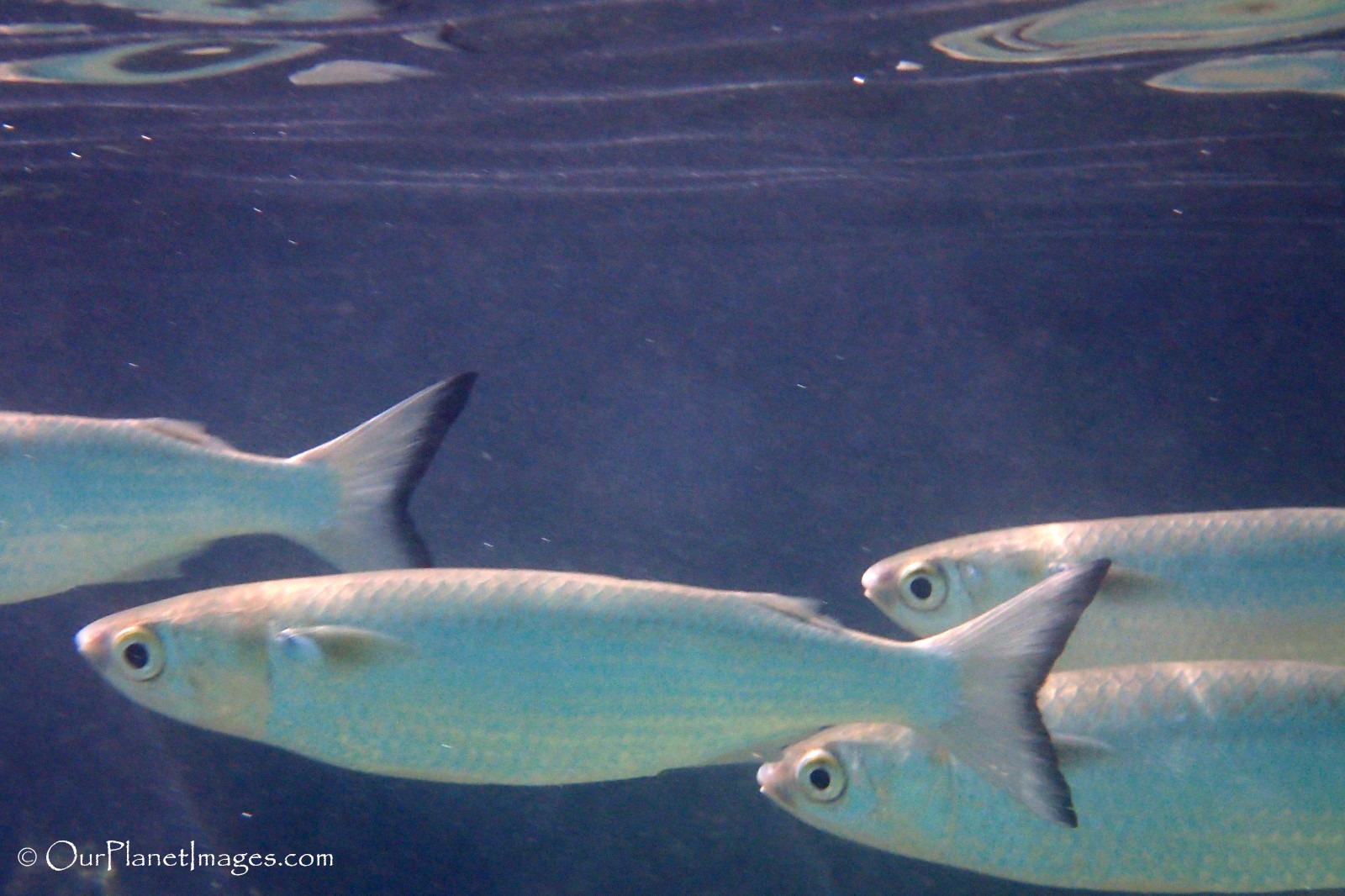
Parrotfish
Queen Parrotfish (Male and Female)
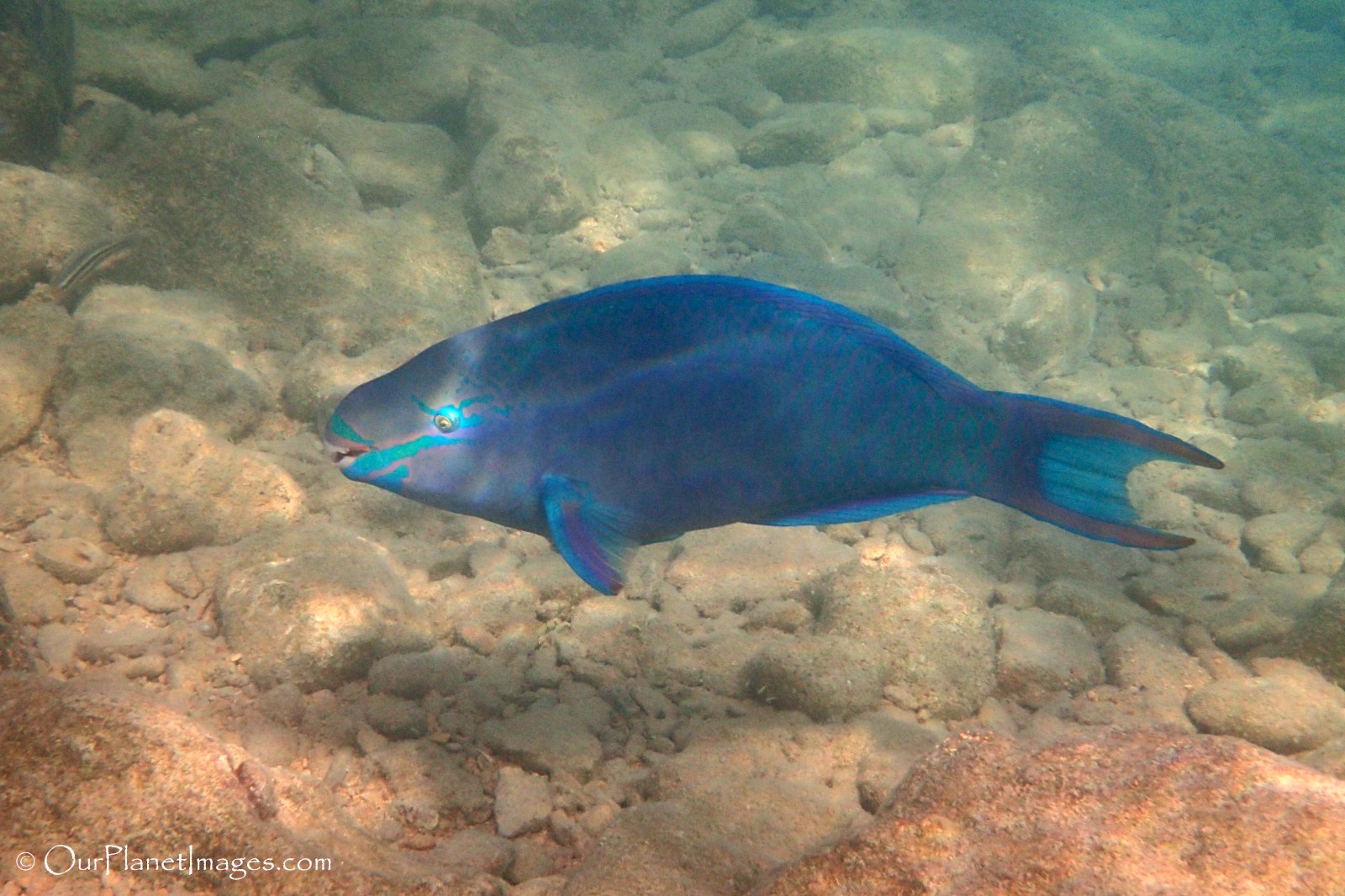
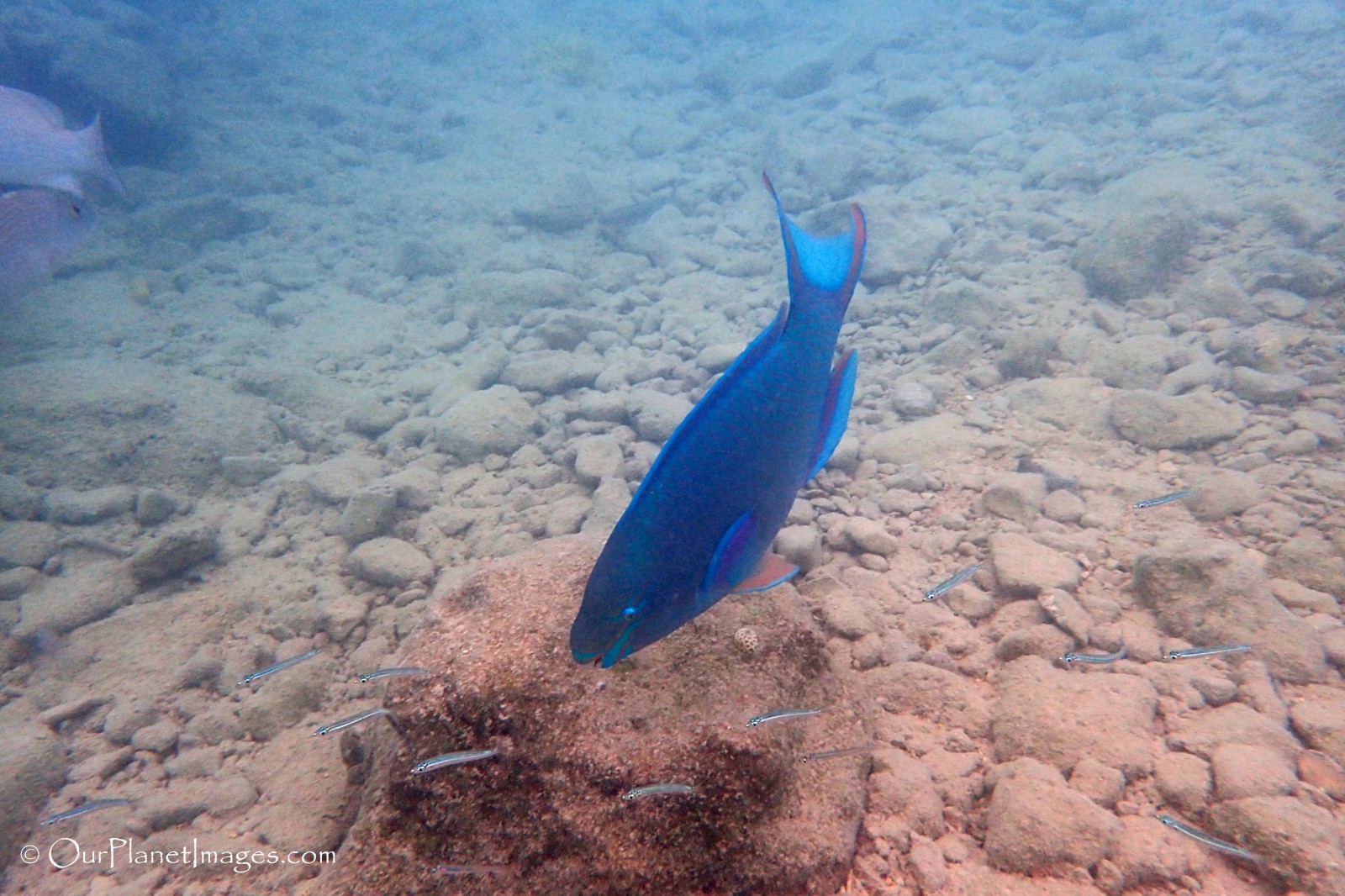

Redband Parrotfish

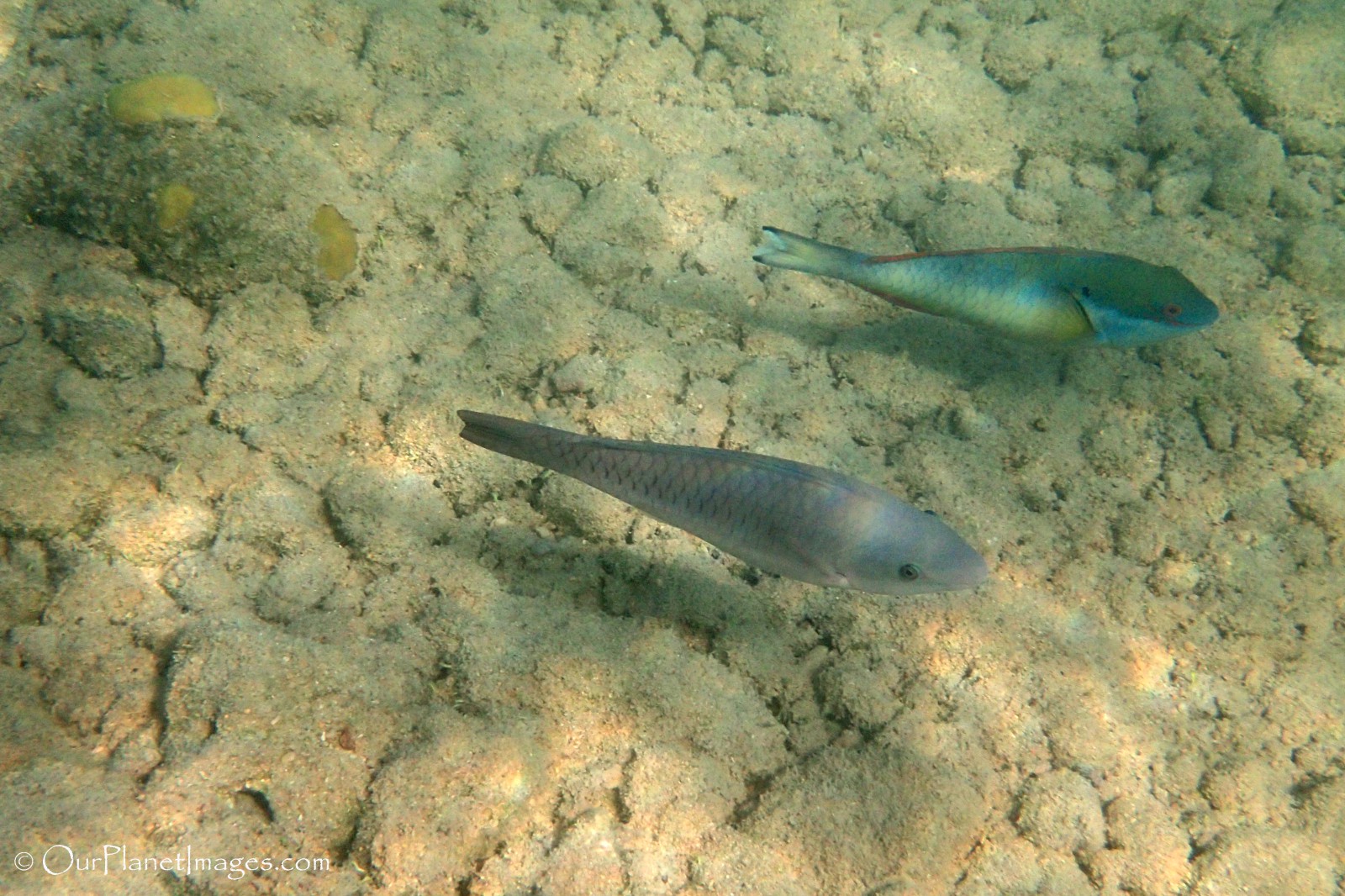
Stoplight Parrotfish (Male and Female)
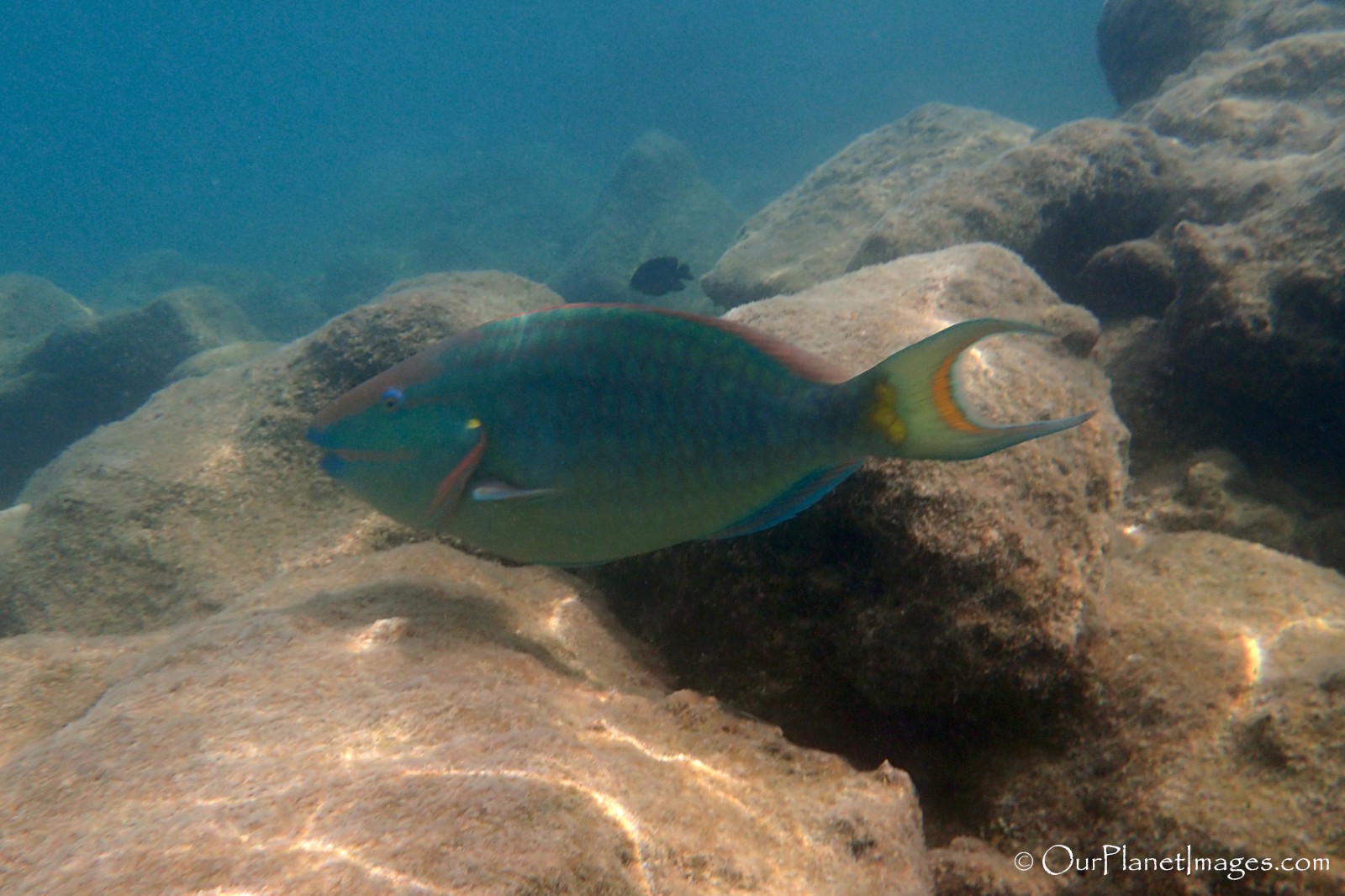
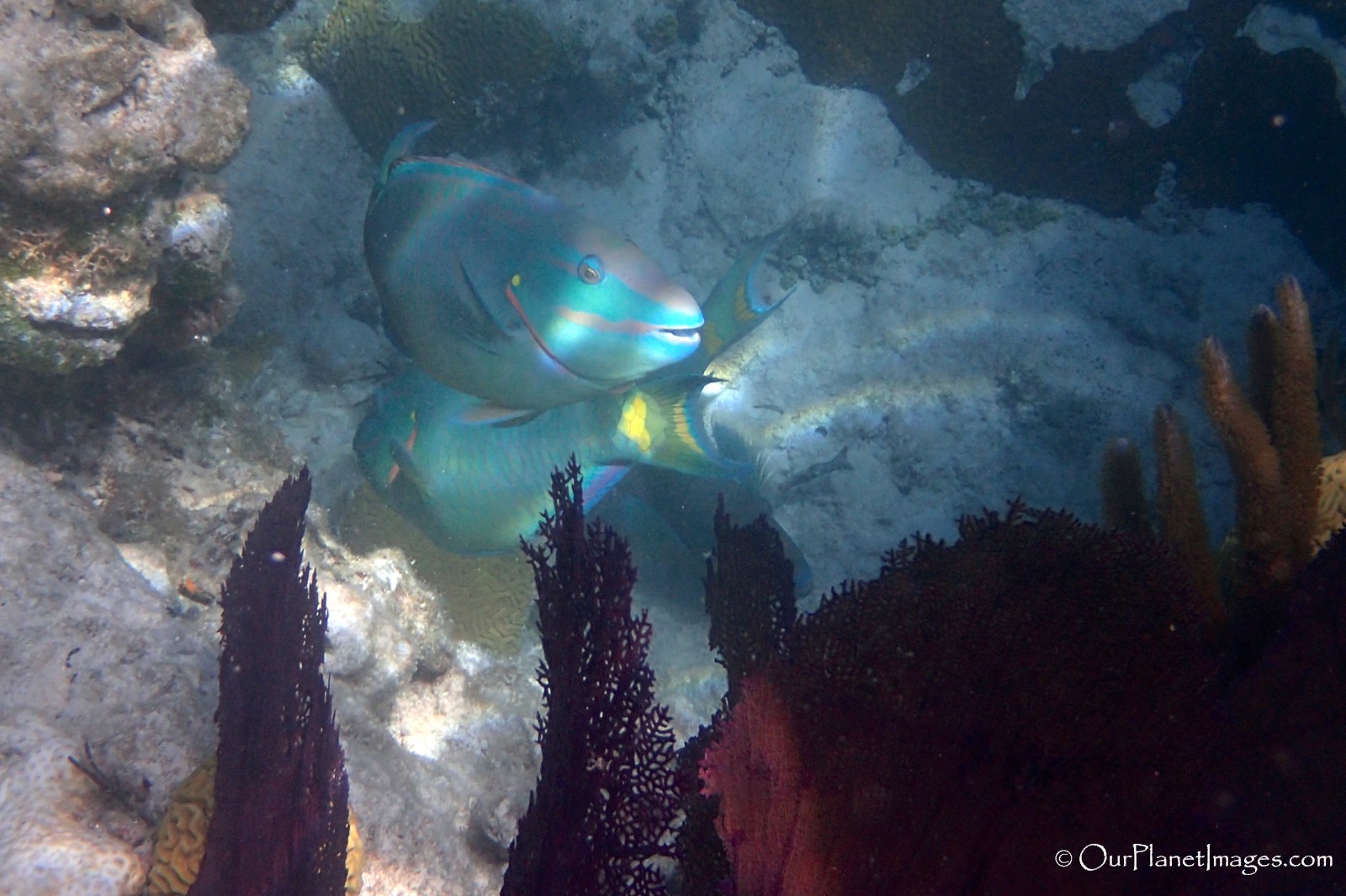
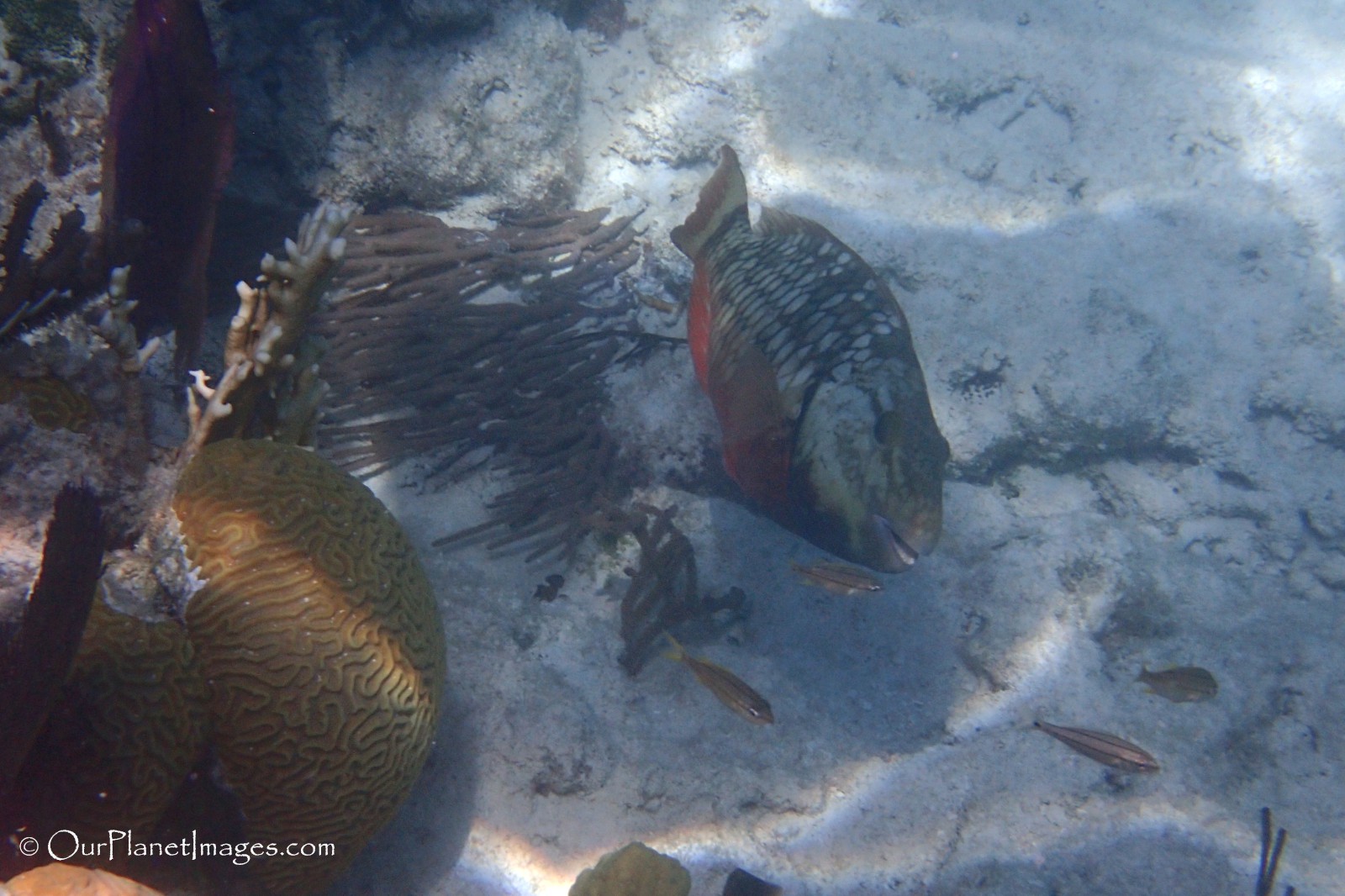
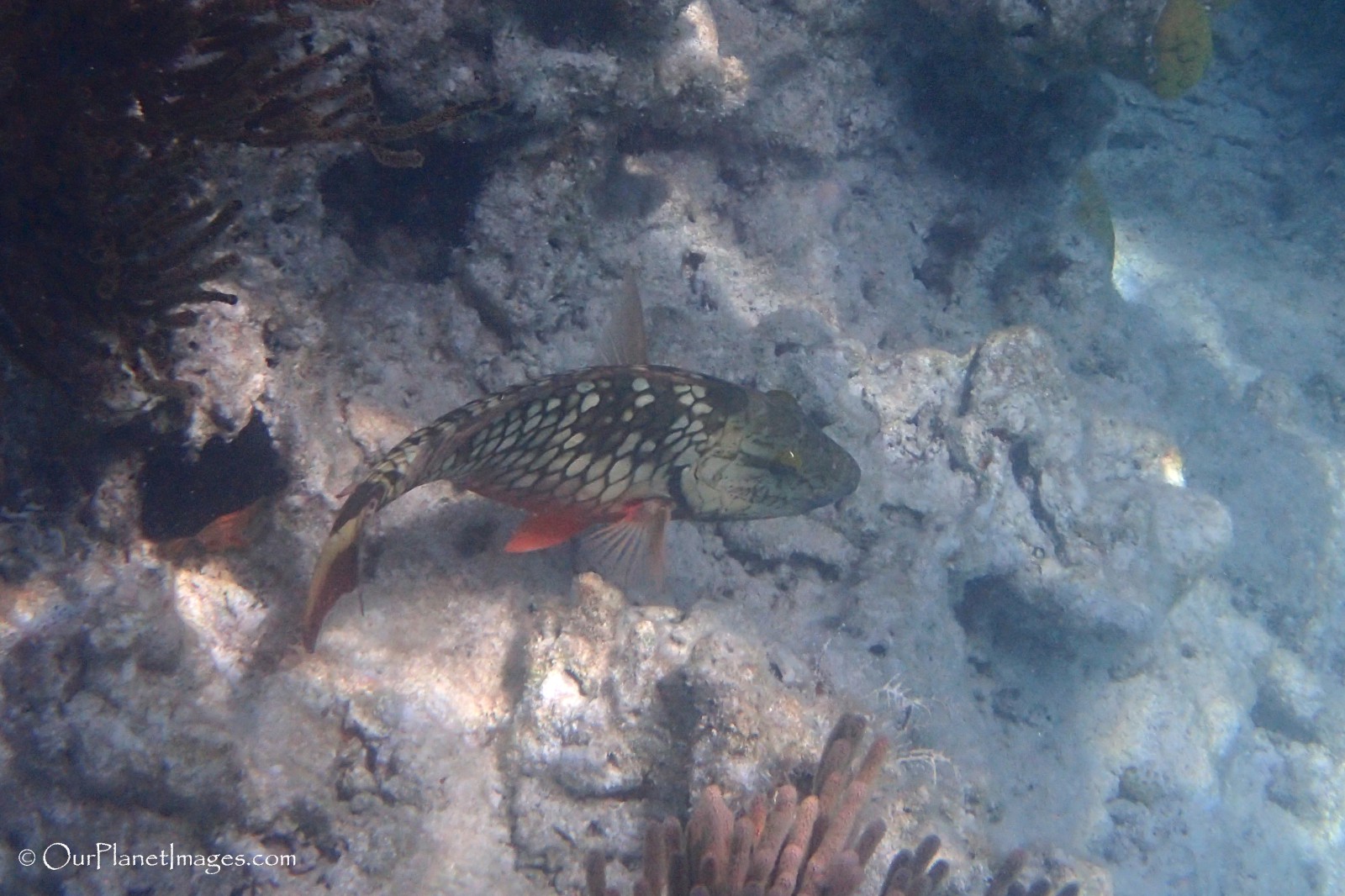
Striped Parrotfish (Juvenile and Adult)
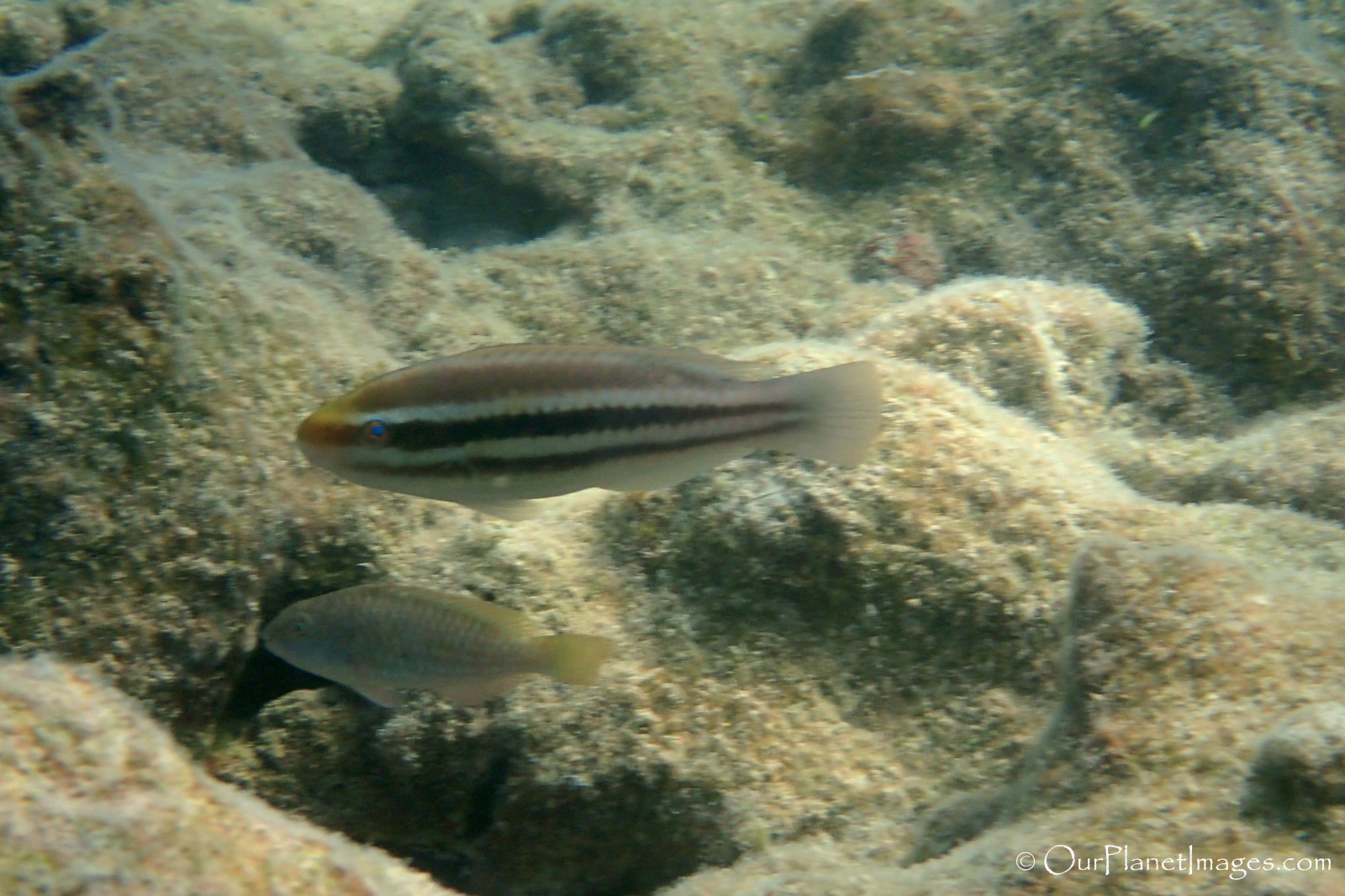

Yellowtail Parrotfish
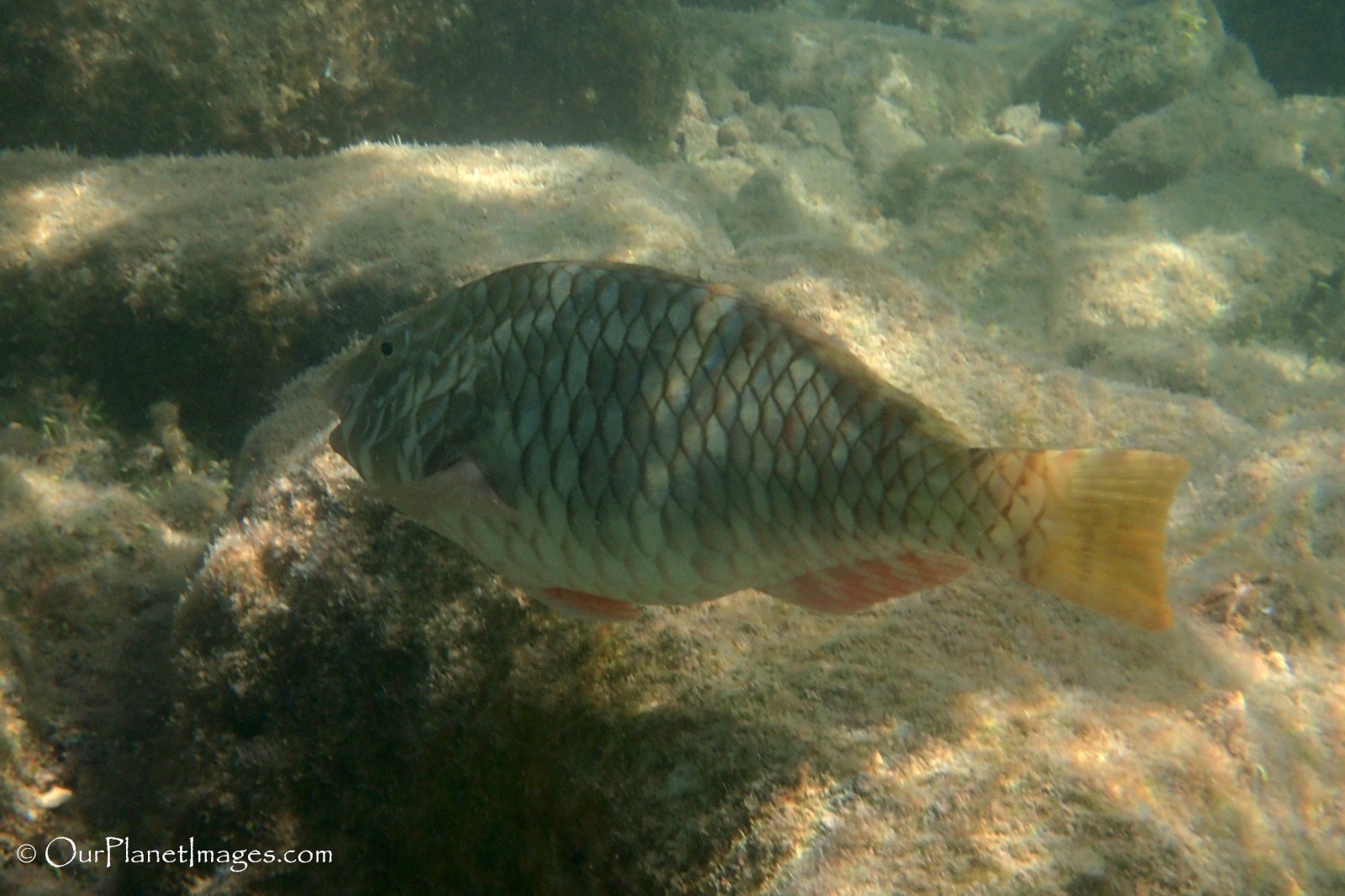
Damselfish
Sergeant Major
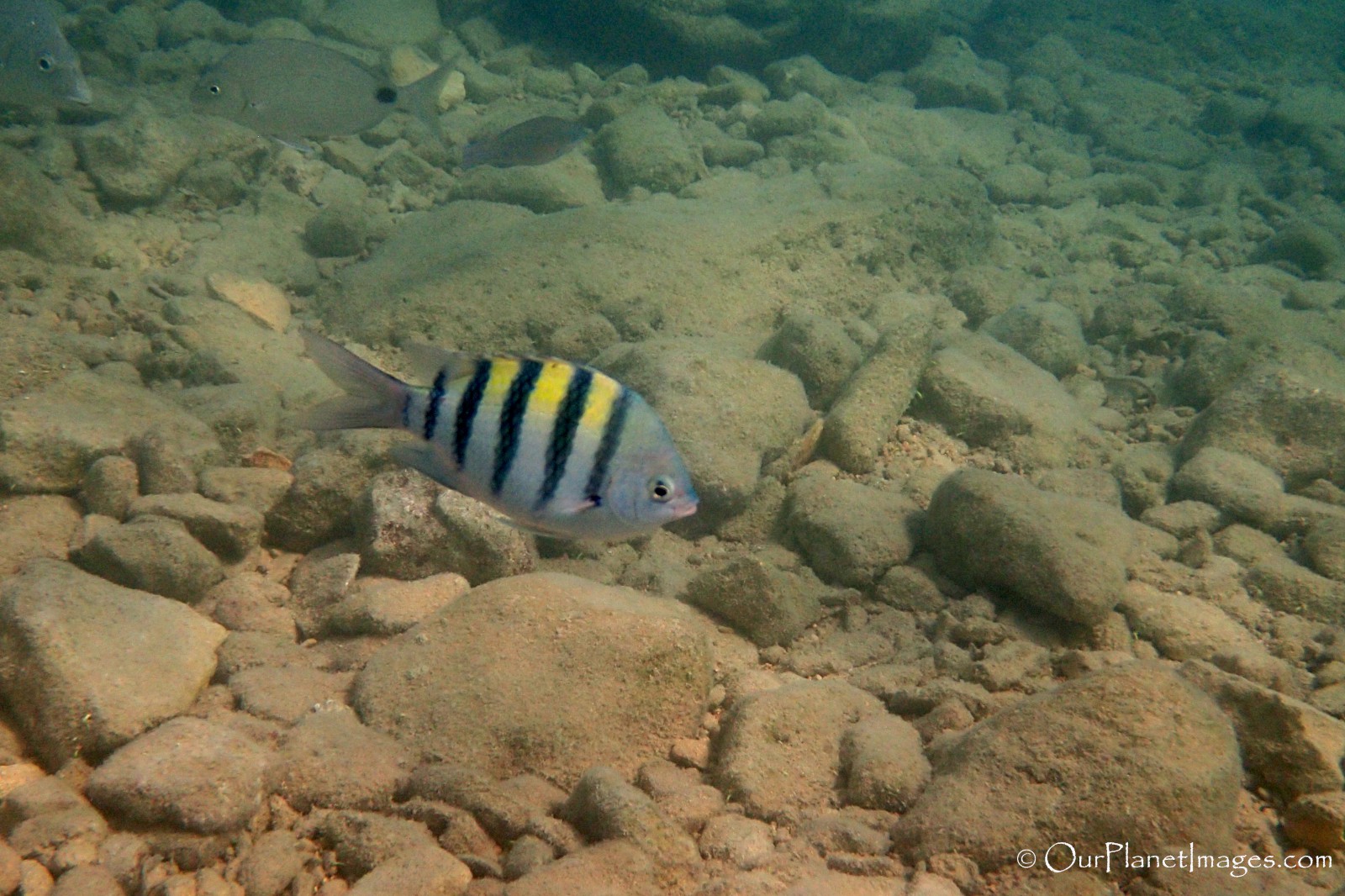

Squirrelfish
Longspine Squirrelfish
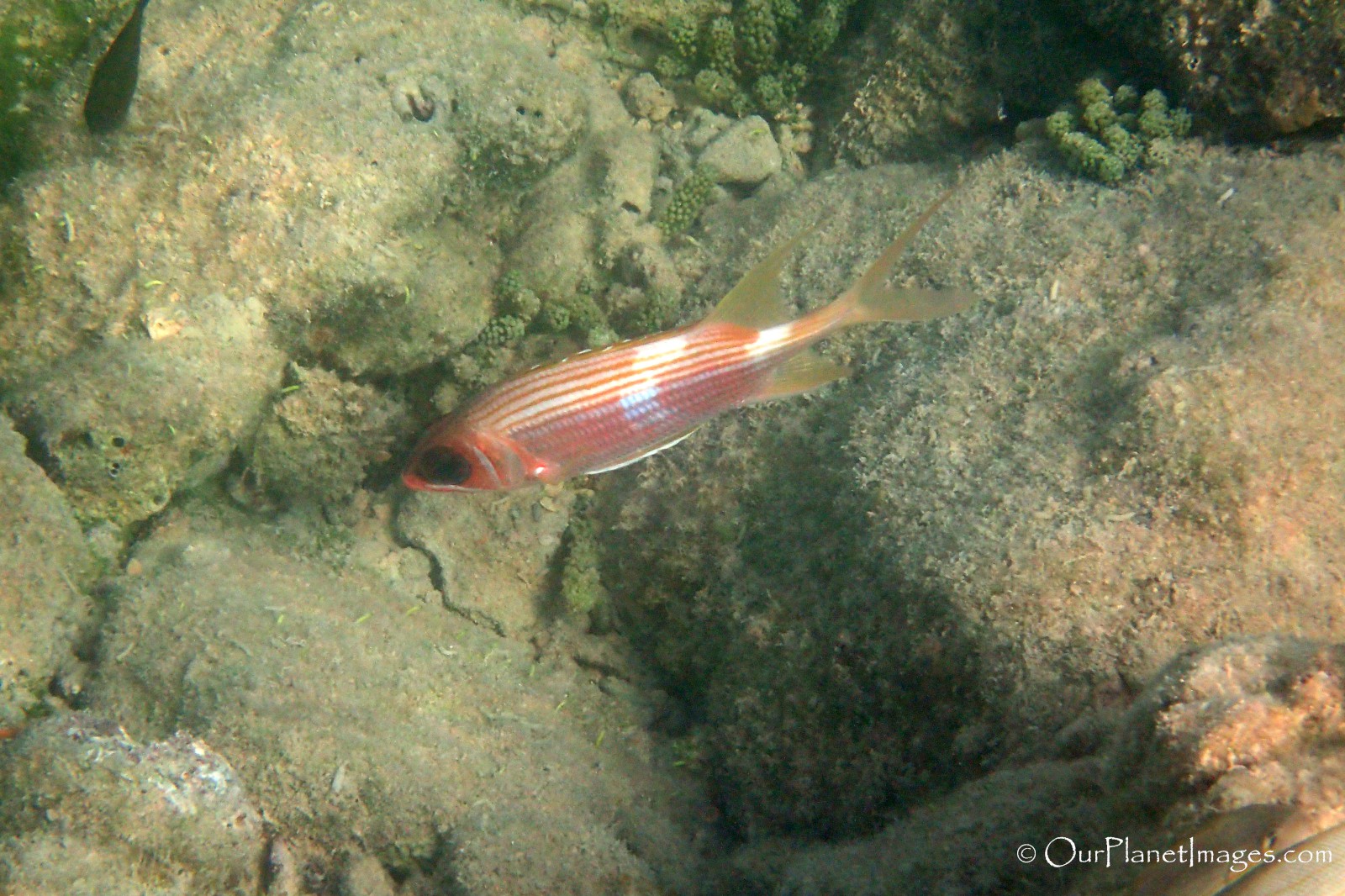
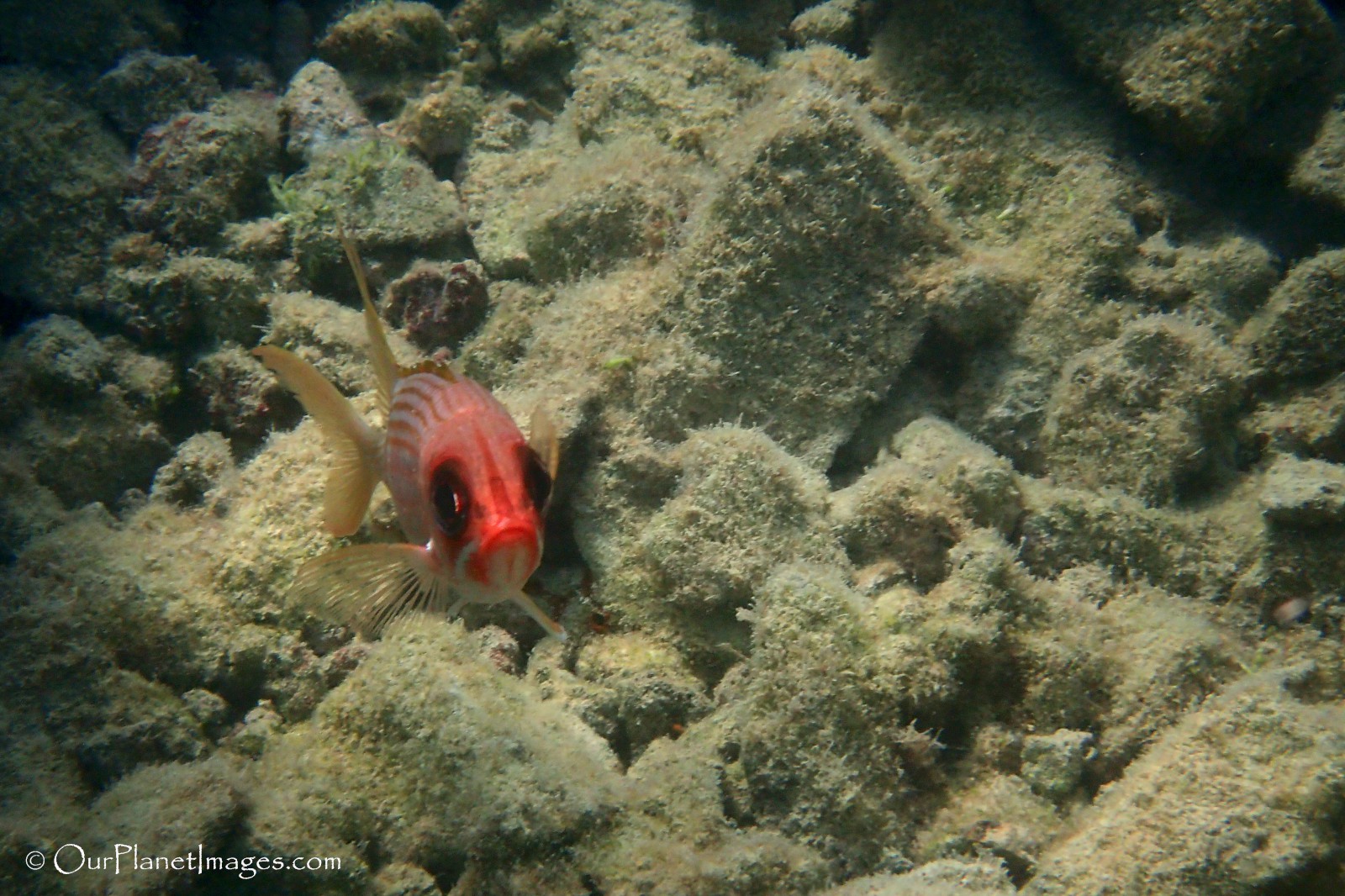
Snapper
Mangrove Snapper
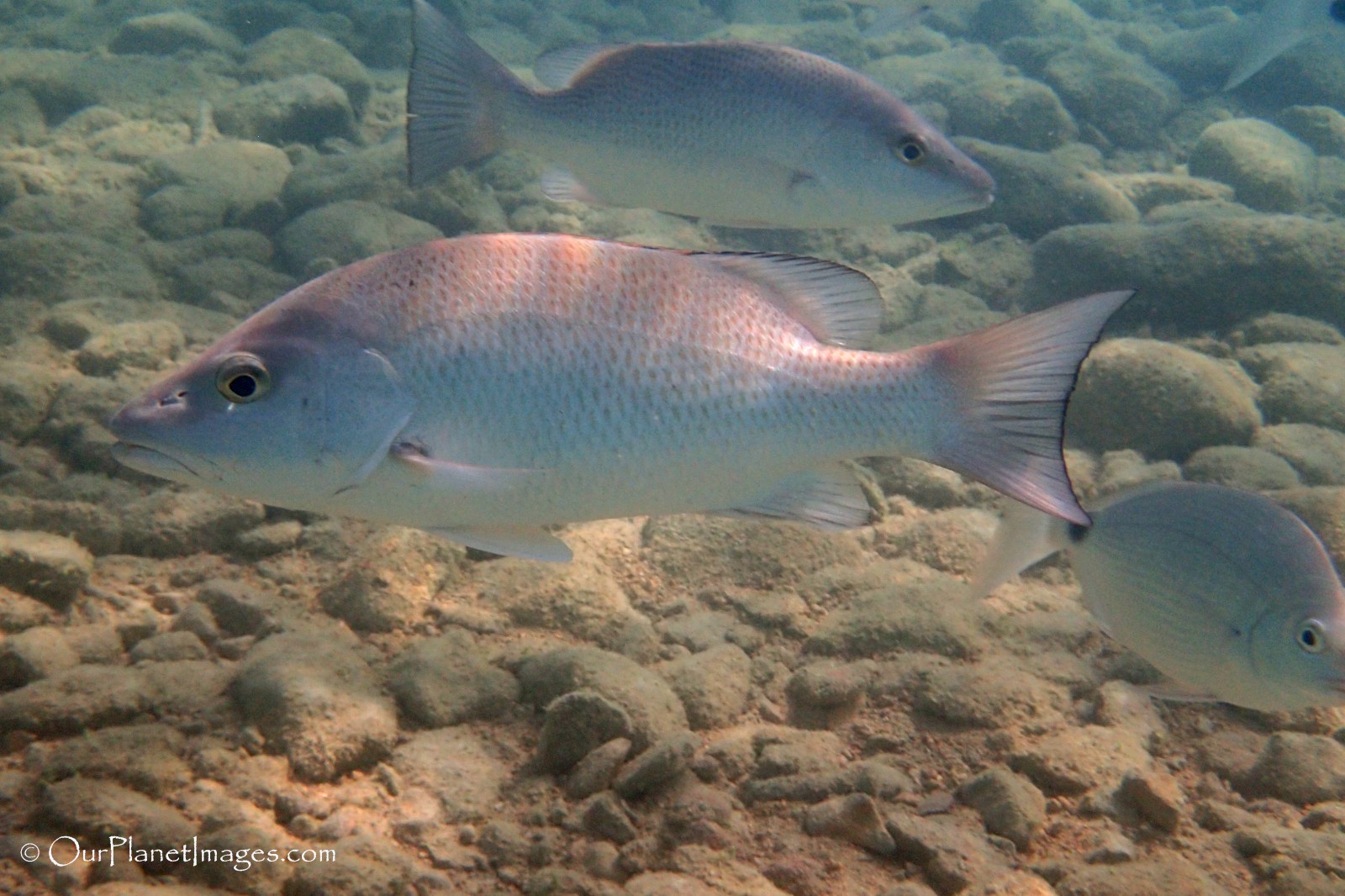
Yellowtail Snapper
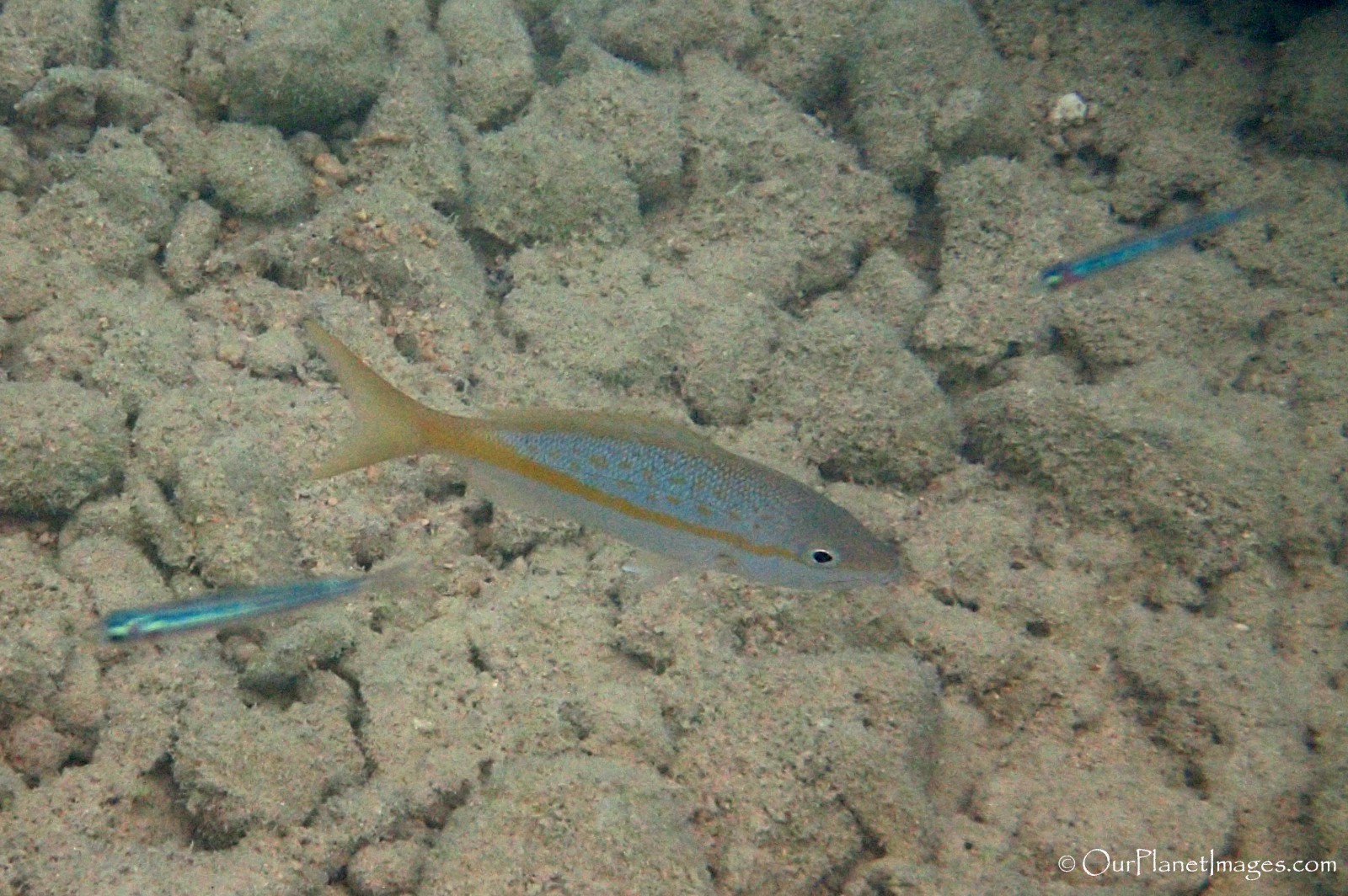
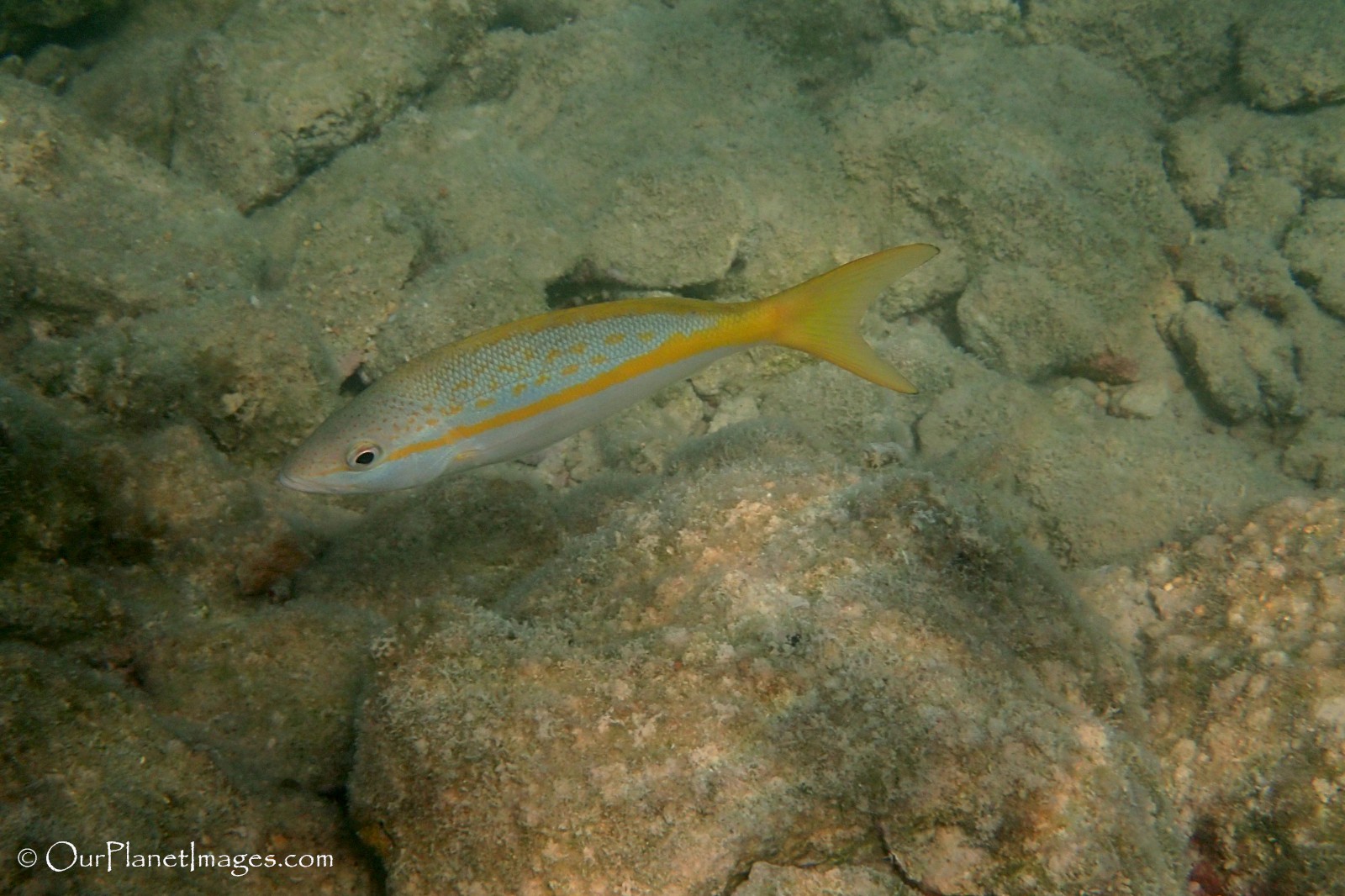
Wrasse
Bluehead Wrasse
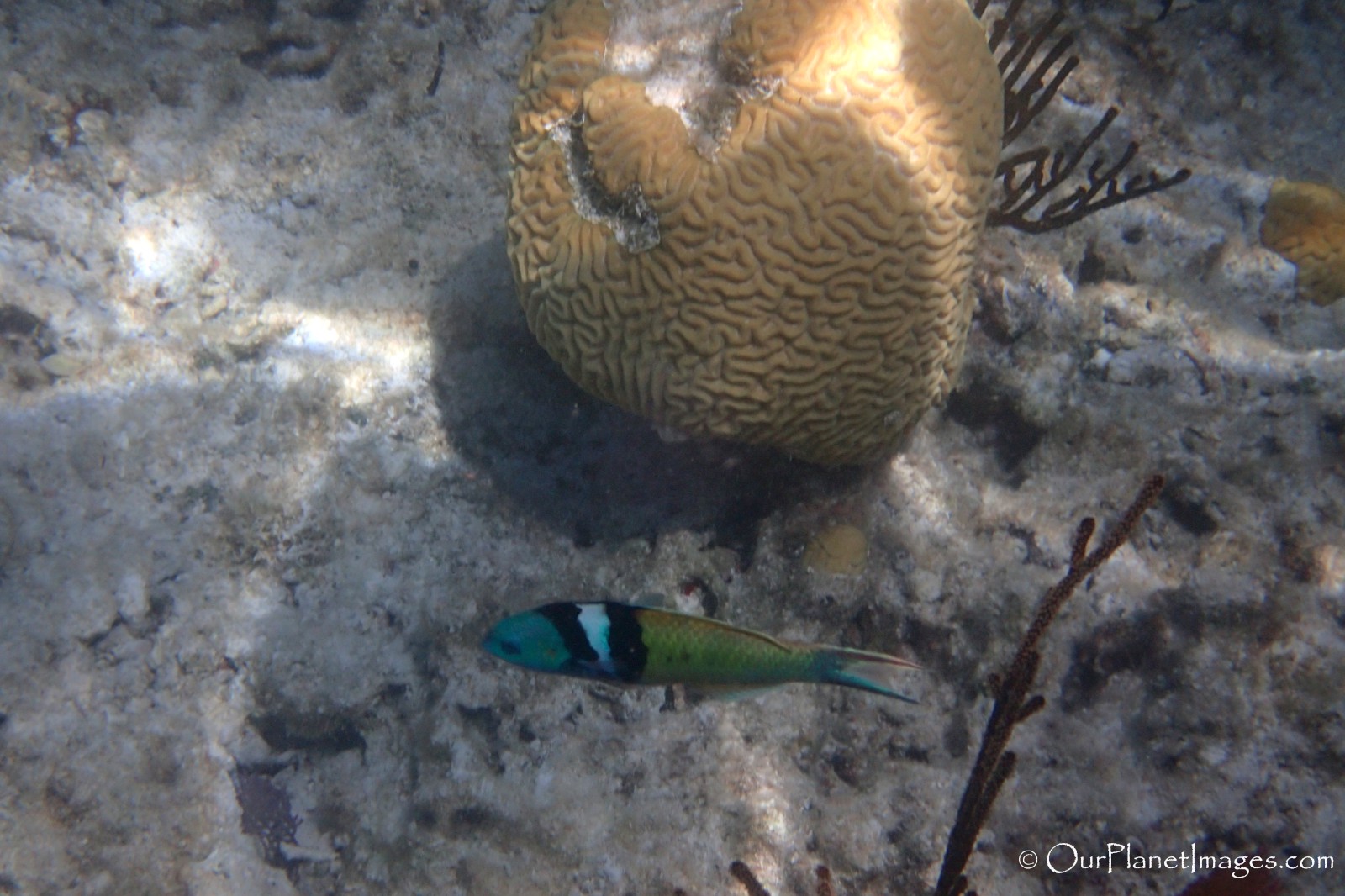
Puddingwife Wrasse
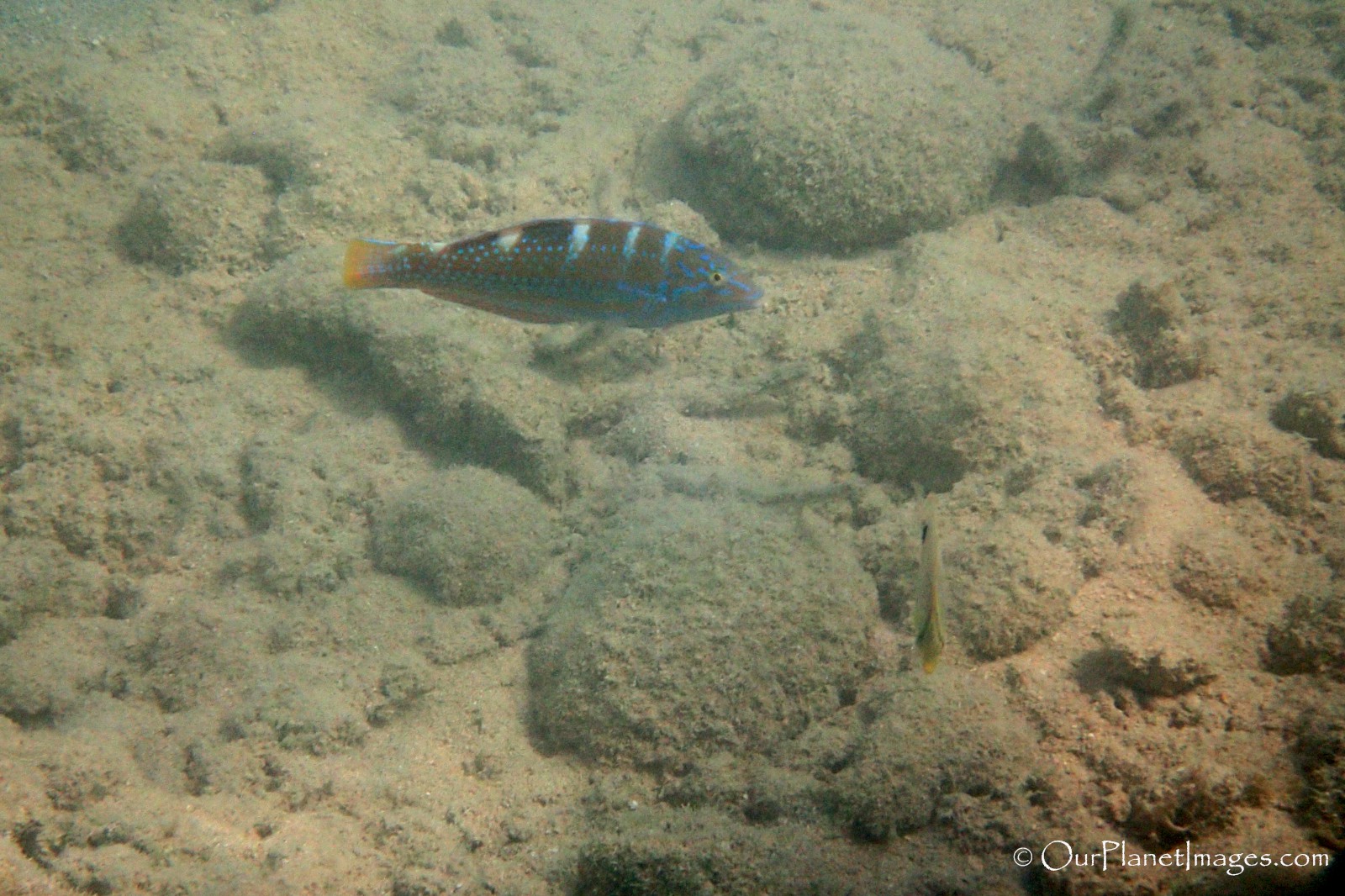
Anemones and Jellyfish
Anemones and Jellyfish are similar because they are a type of planet with stinging hairs. They are simple creatures with very soft bodies which contain no brain, no heart and no bones.
The difference between anemones and jellyfish is that anemones are permanently attached to a structure and feed only when prey flows through their tubular bodies while jellyfish are free floating and catch their prey in the open water.
Anemones
Giant Anemone
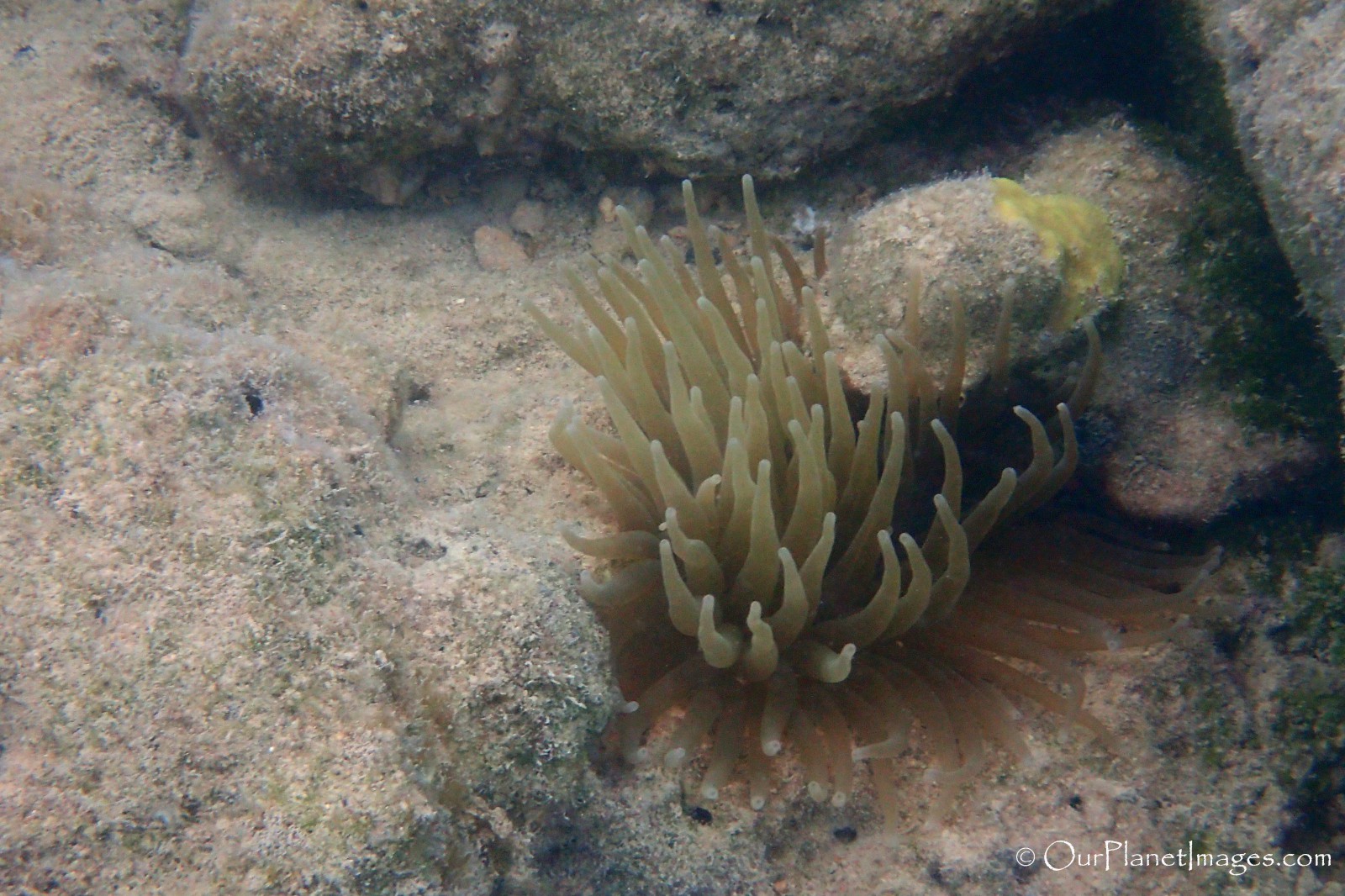
Jellyfish
Moon Jellyfish
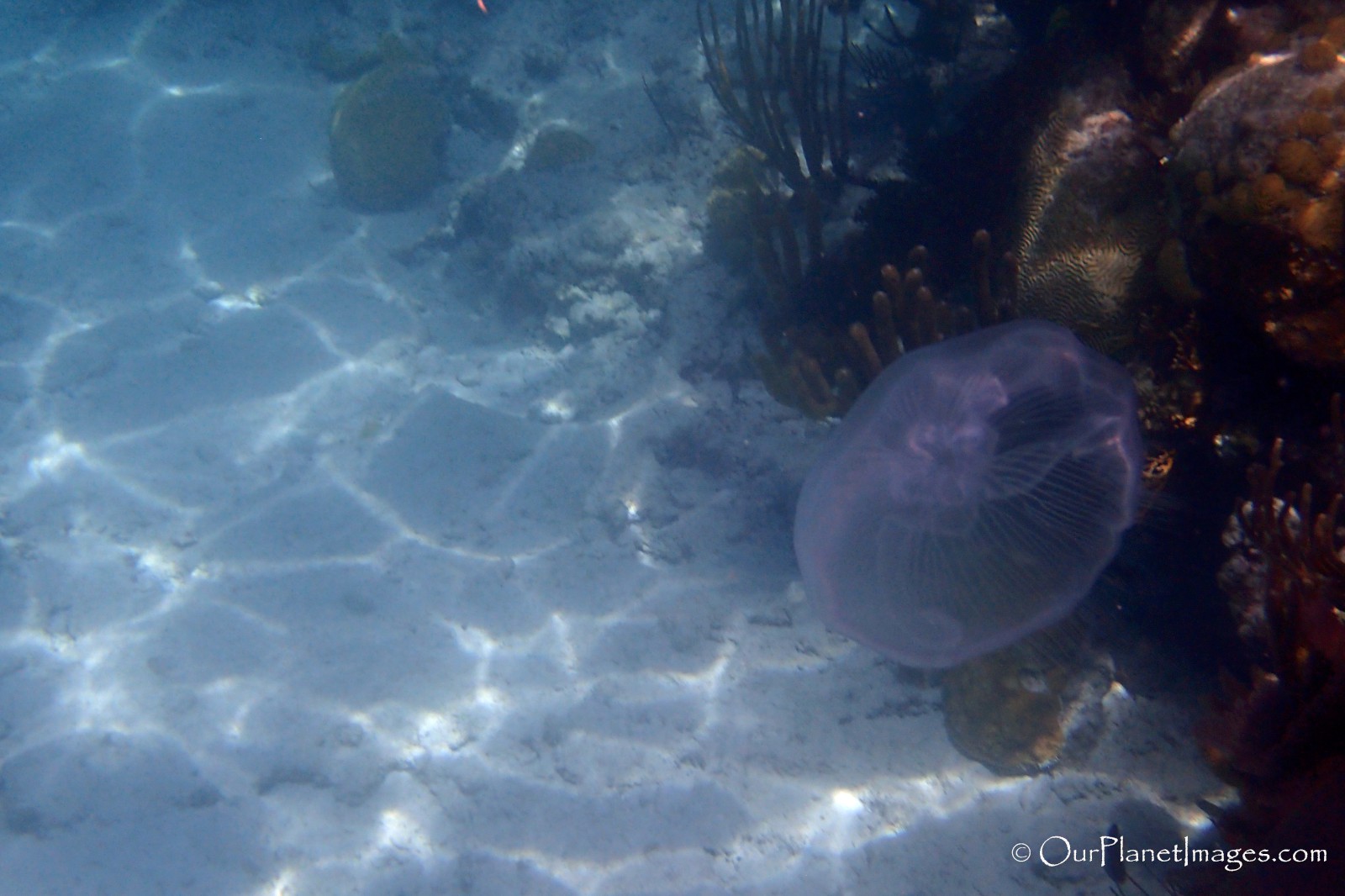
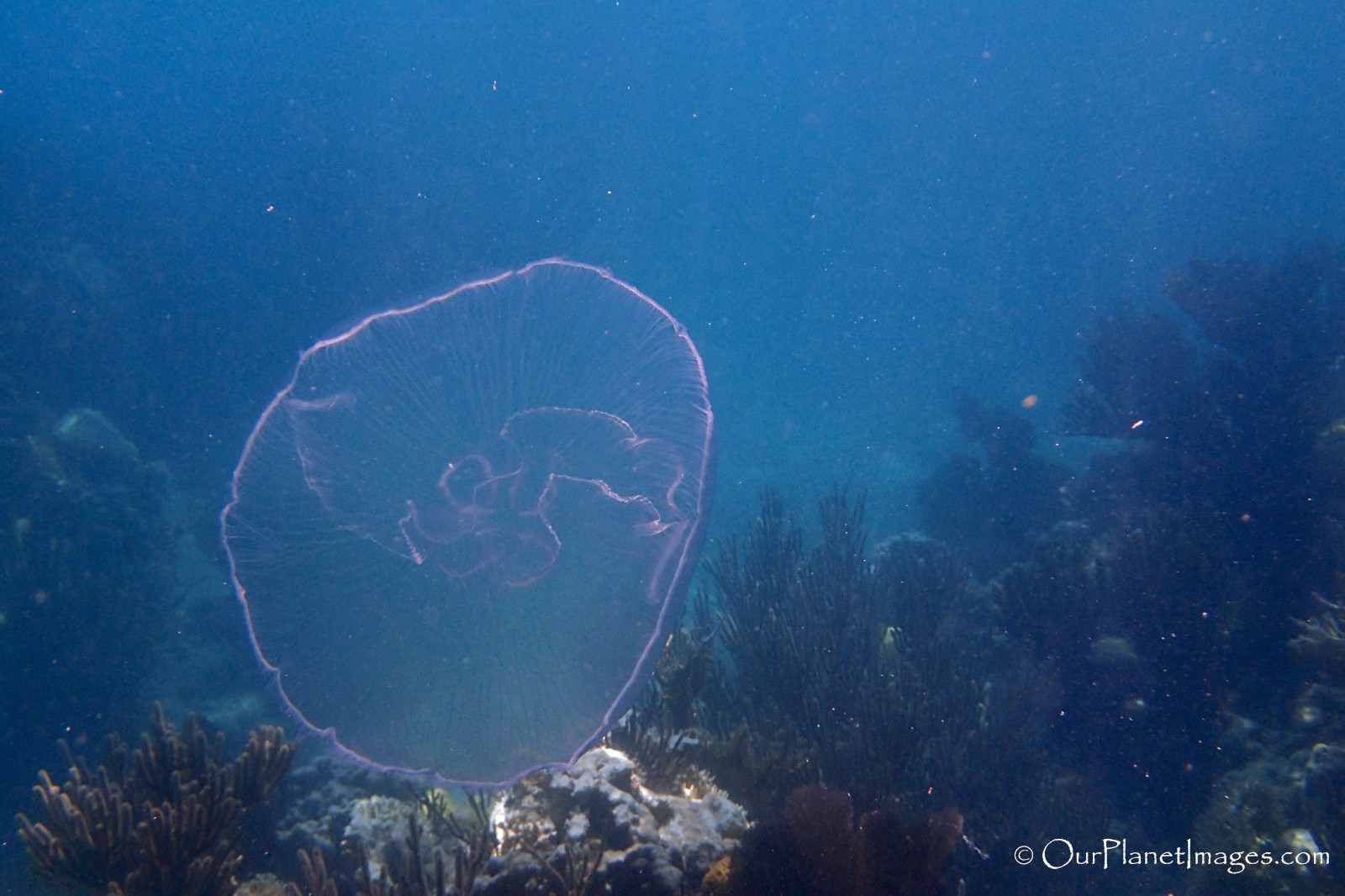
Coral that live in Bermuda
Bermuda has two types of coral reefs which are lagoonal reefs and rim reef.
Lagoonal reefs form in slower moving water that may accumulate sediment buildup. These reefs have more species of delicate branching corals that bend with waves and currents allowing them to shed sedimentation.
Rim reefs bear the brunt of waves and Atlantic storms but the water tends to be clear and sediment free. These reefs have boulder shaped corals such as brain corals and star corals.
Black Sea Rod
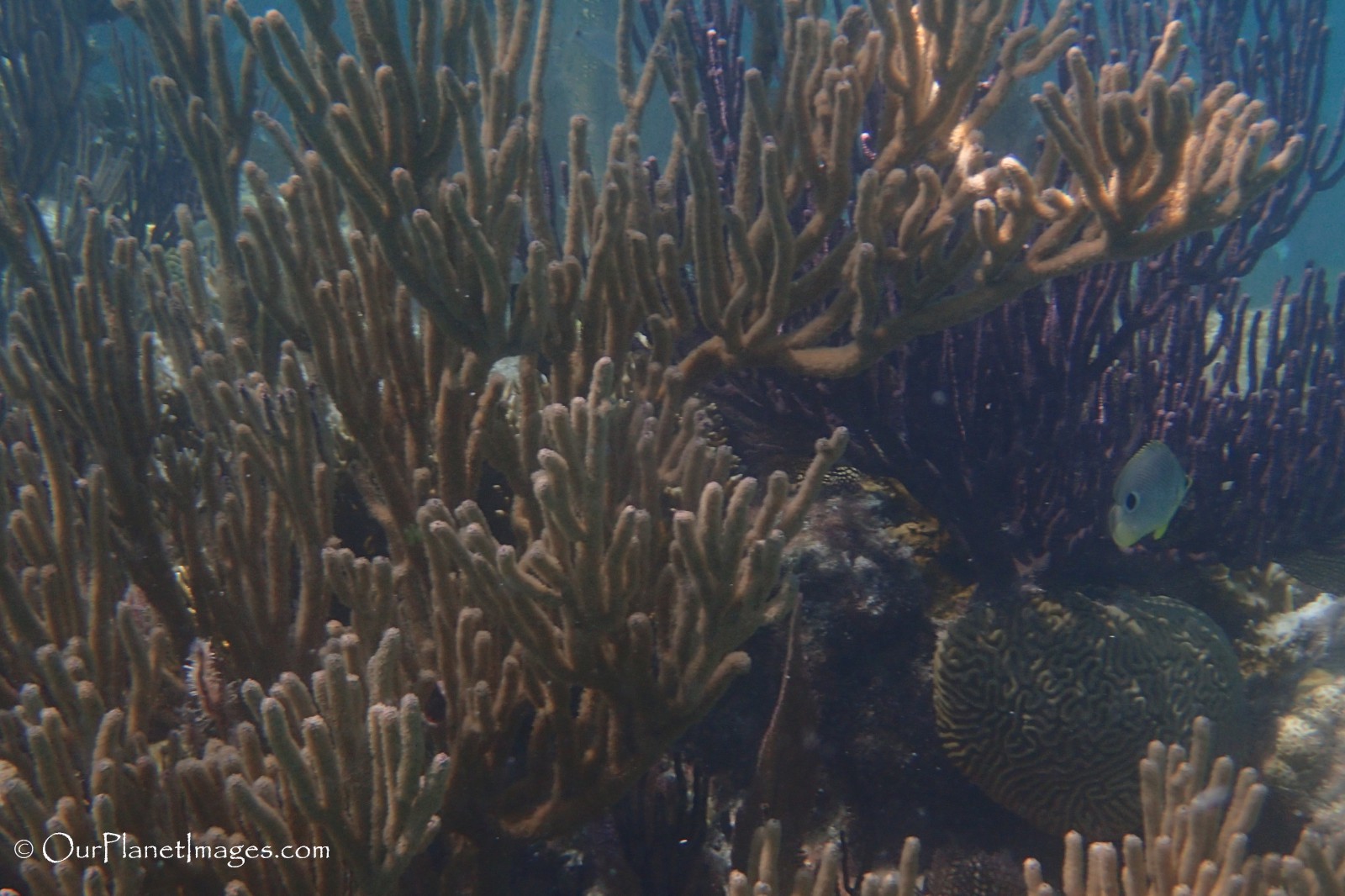
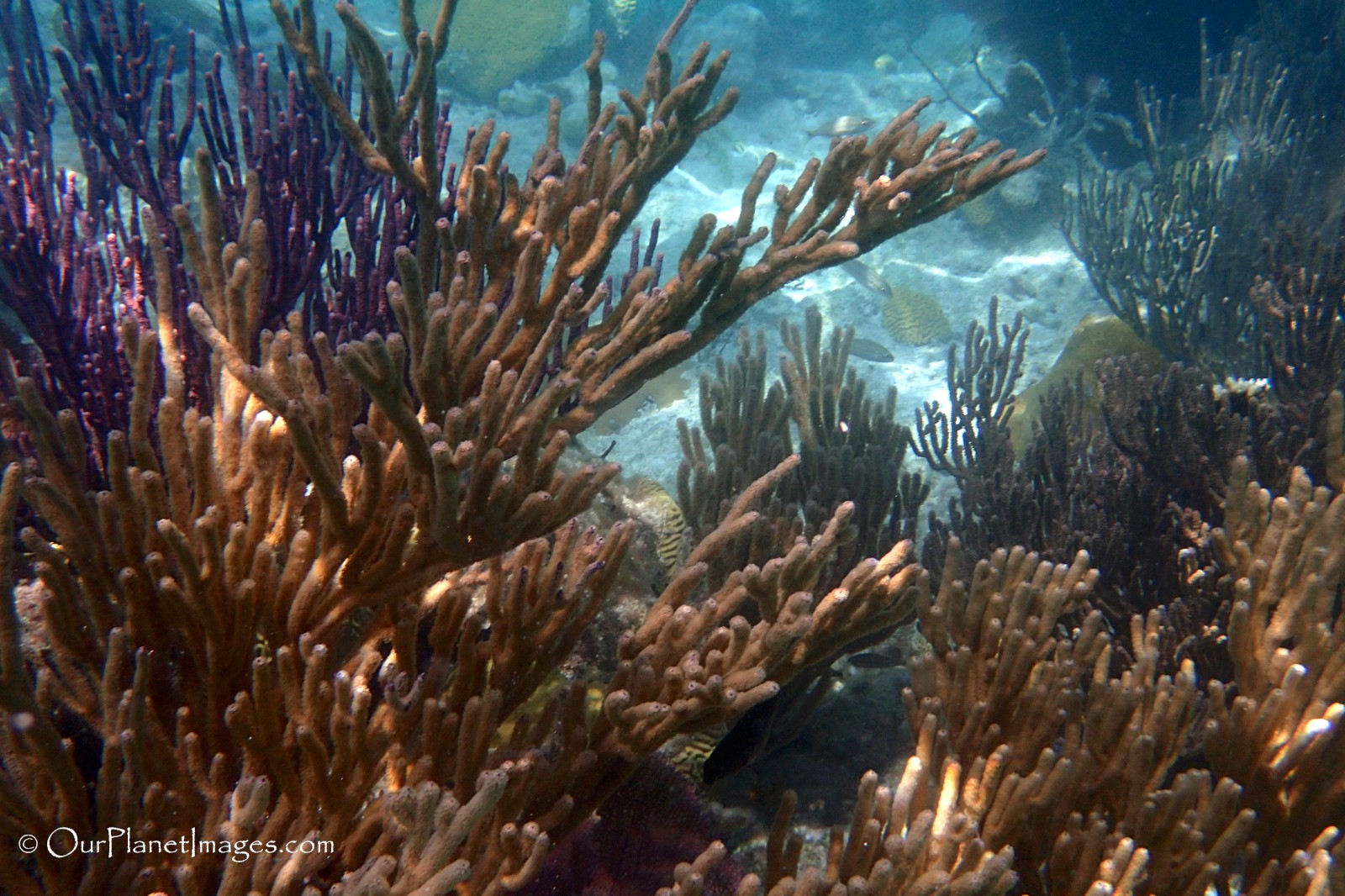
Boulder Brain Coral
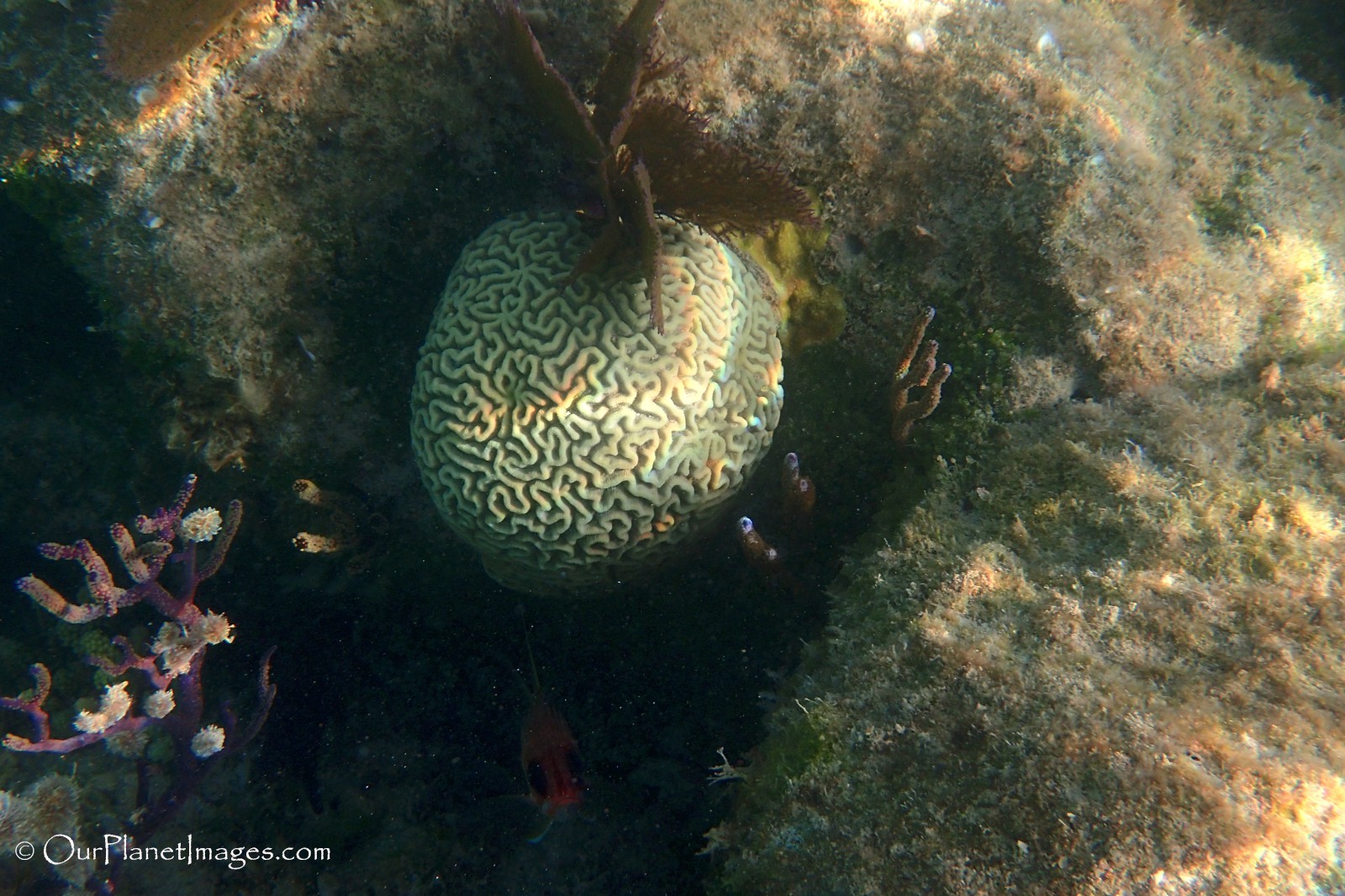

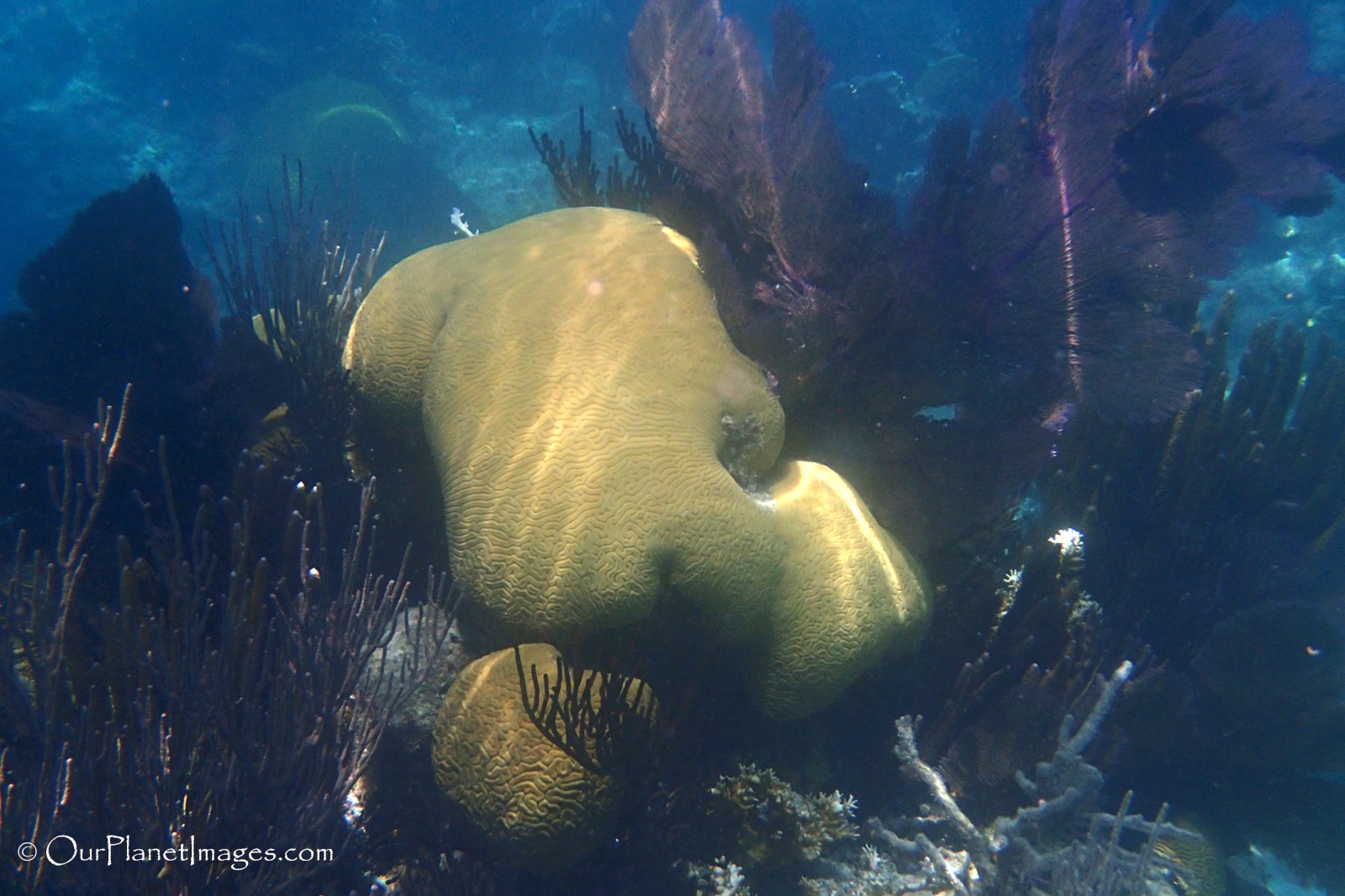
Branching Fire Coral (Right side)
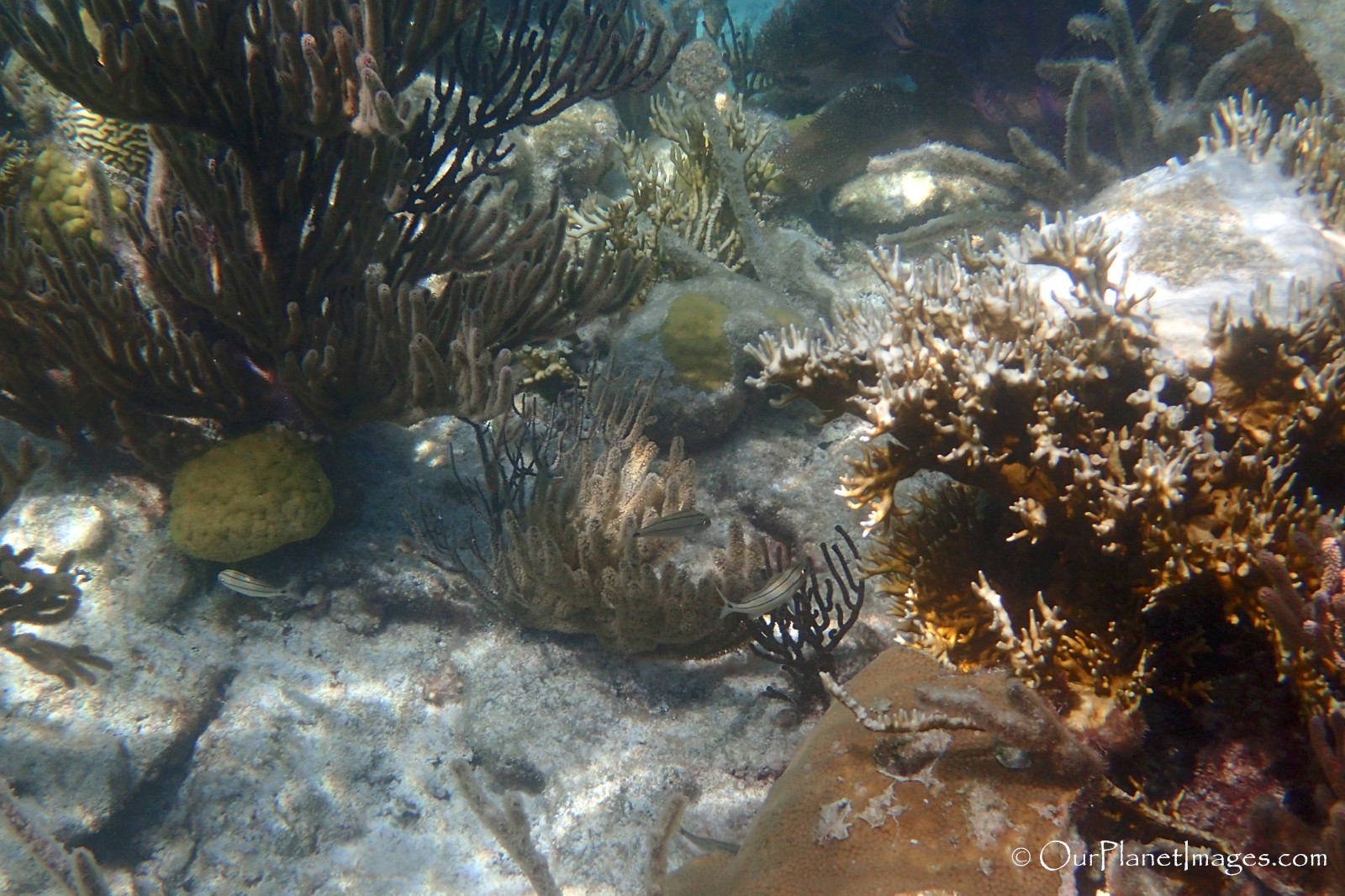
Common Sea Fan Coral

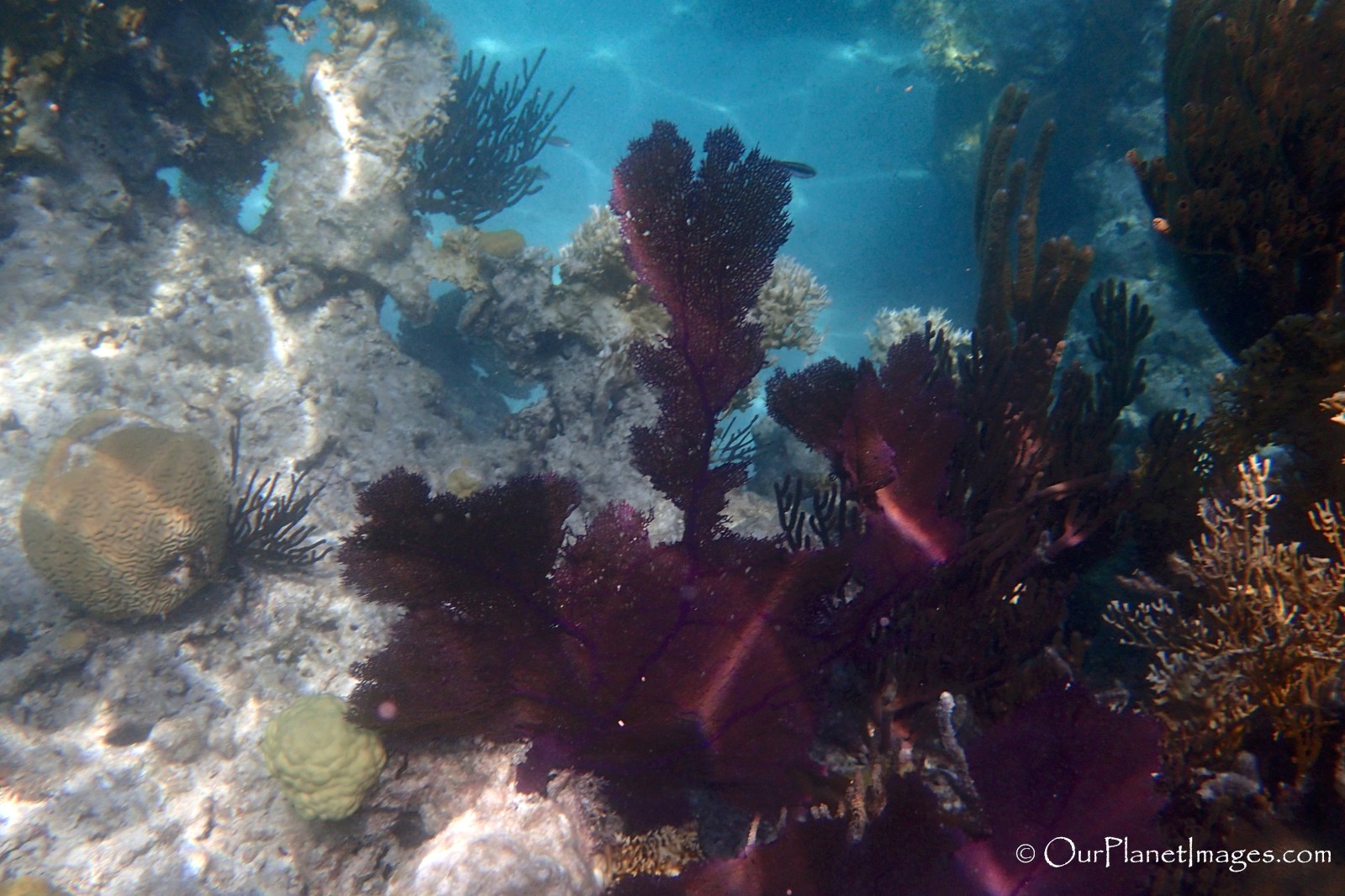
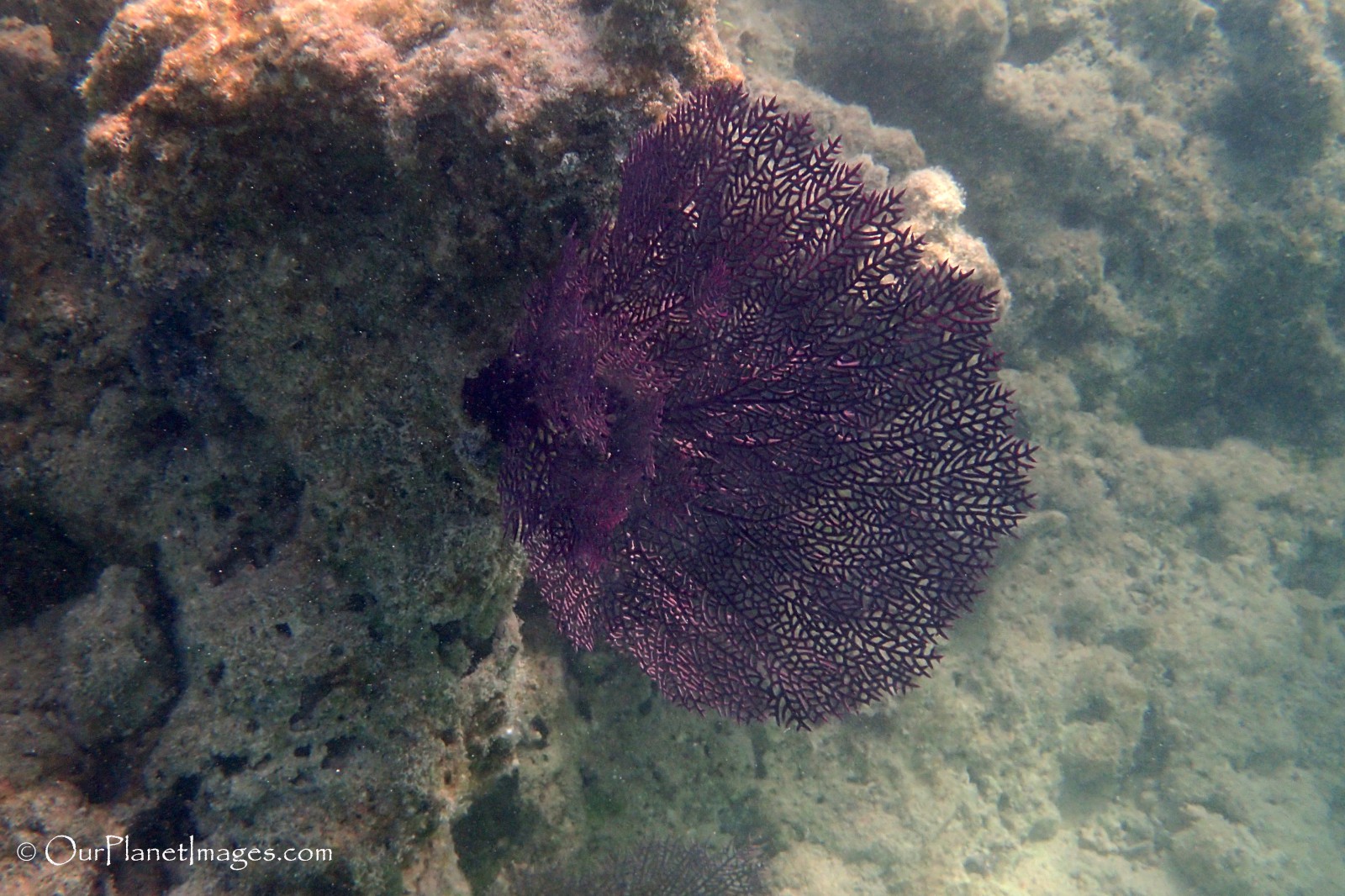
Grooved Brain Coral
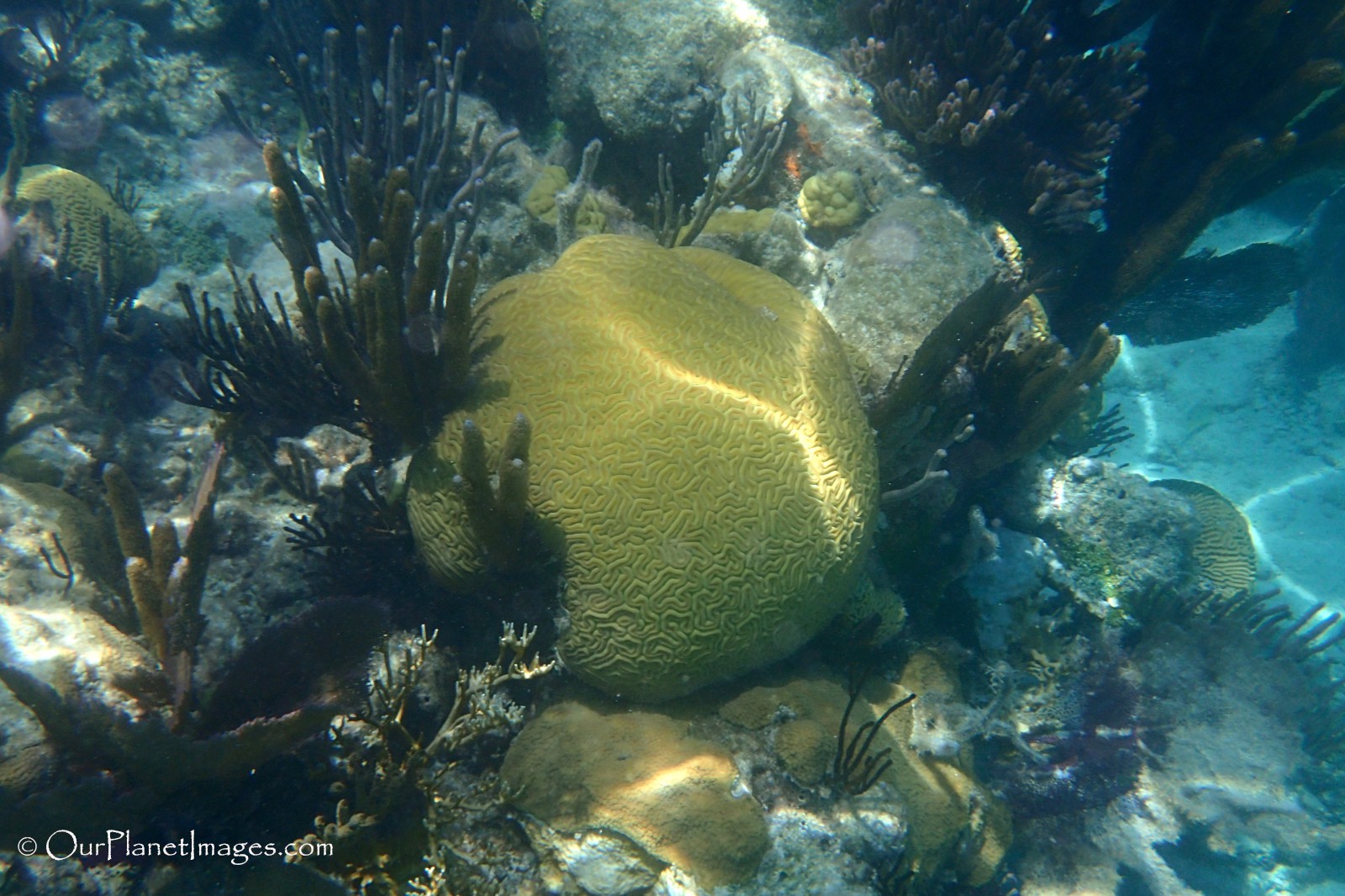
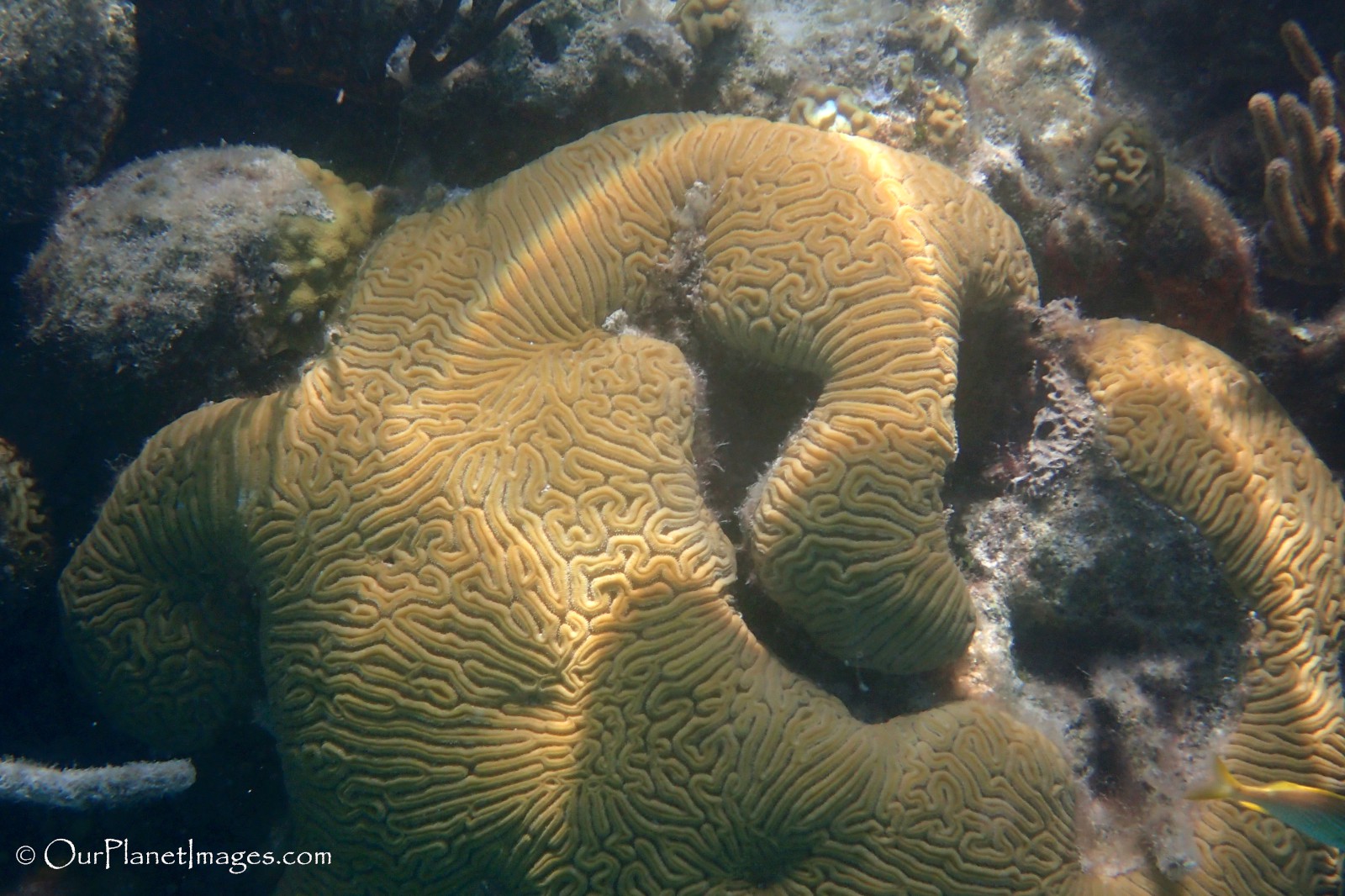
Lobed Star Coral (lower)
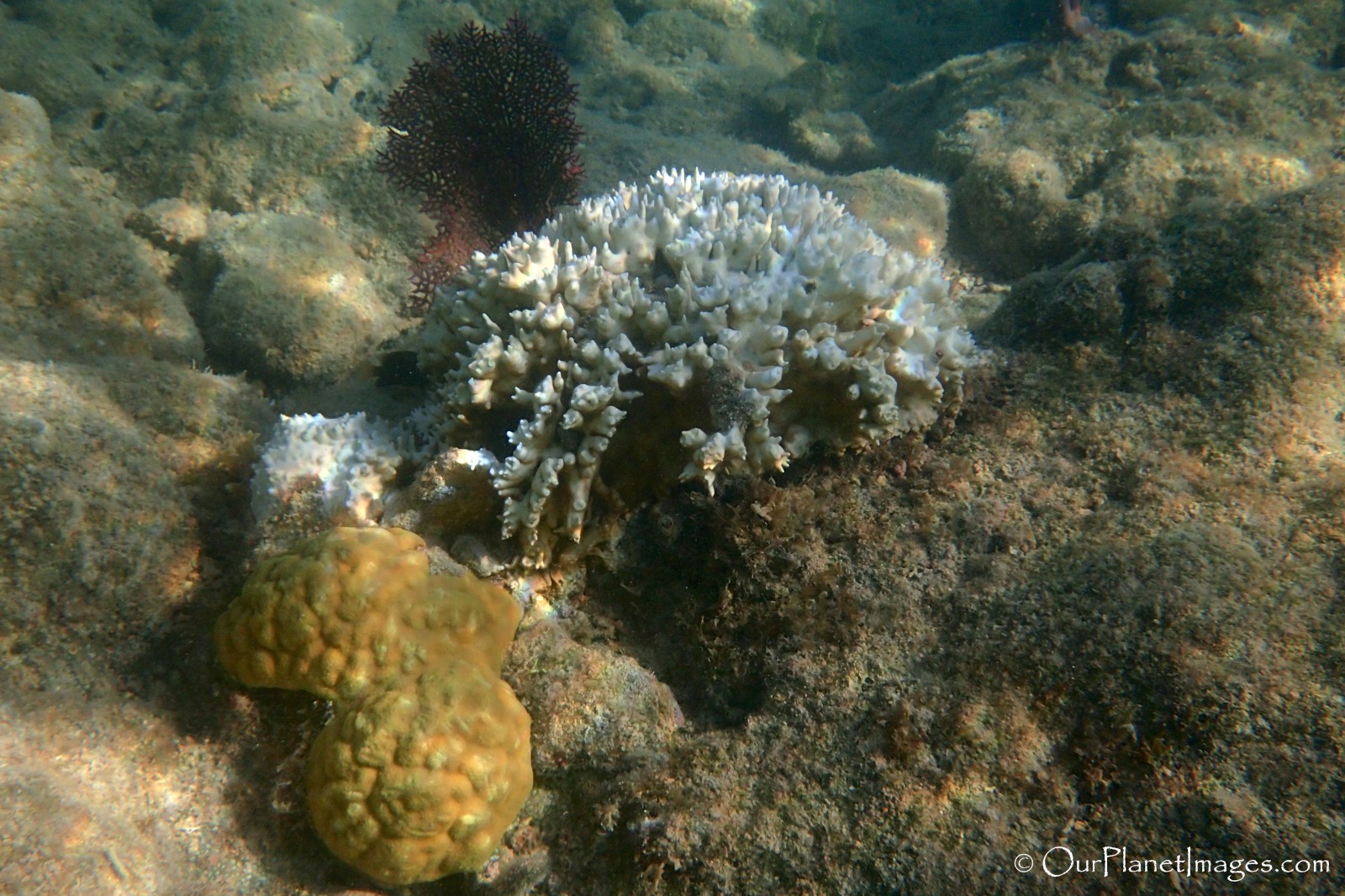
Unidentified Coral
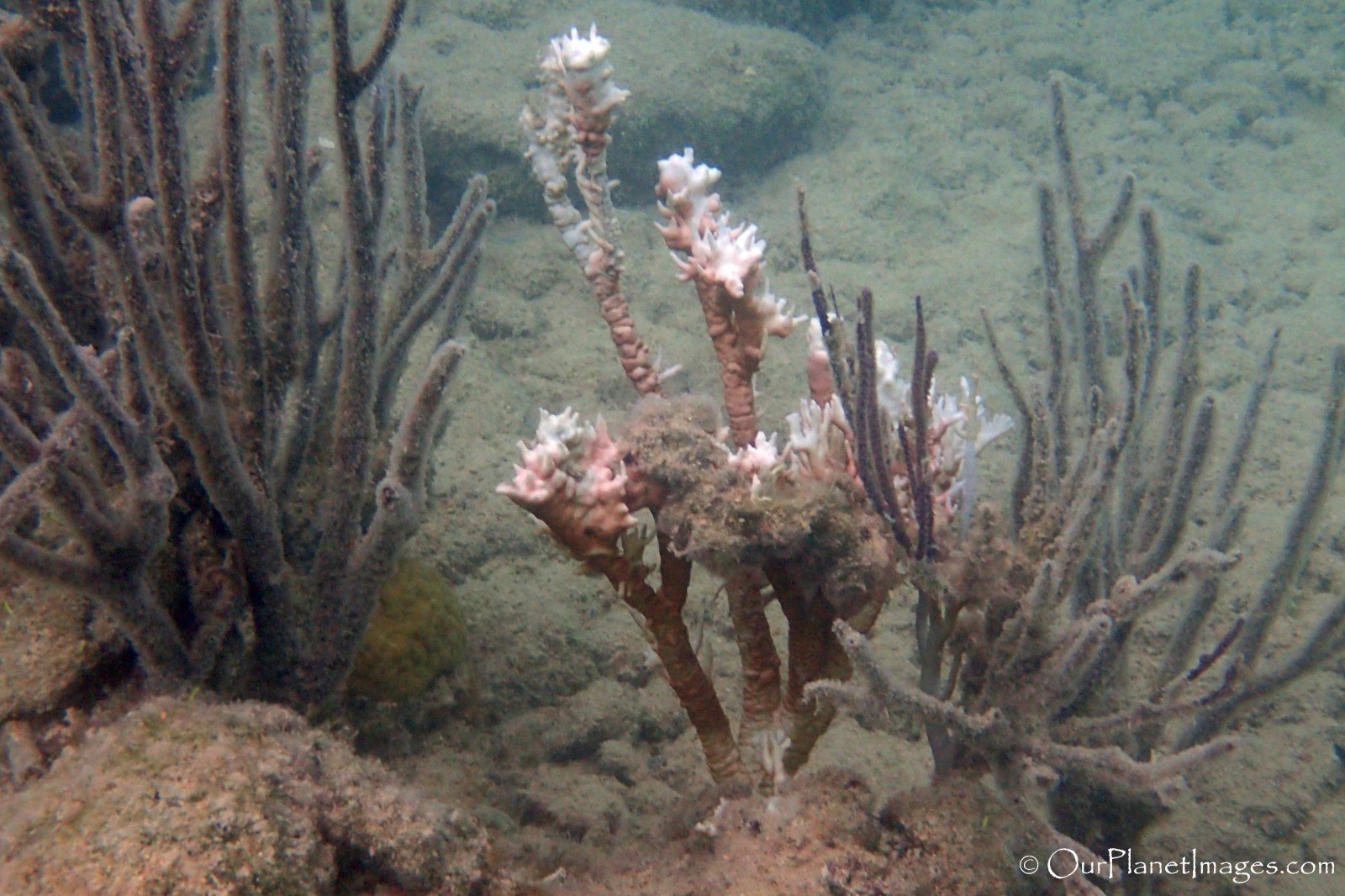
The Dust on My Shoes
I have been snorkeling tropical coral reefs for over 20 years and I have been enthusiastic about snorkeling from my first snorkeling experience. My first few snorkeling trips were on organized snorkeling tours from tour boats in deep water but after purchasing my own snorkeling equipment, I started snorkeling directly off the beach in shallow water.
On my recent trip to Bermuda, I snorkeled on an organized snorkeling tour and the next day I snorkeled directly off the beach. Both snorkeling trips were great and I saw lots of fish and coral on each trip.
There are advantages and disadvantages when snorkeling in deep or shallow water.
Deep water
Advantages – water is normally clearer, there are typically more coral formations, bigger fish live in deeper water, tours go to the best locations and tour experts can let you know what fish you should see.
Disadvantages – more expensive, set time schedule, fish are several feet below allowing only an above view of the fish.
Shallow water
Advantages – Most of the time the fish are at eye level allowing better views of the fish, no cost to snorkel, snorkel as long as you can physically stay in the water.
Disadvantages – The wave action can cause the water to be less clear, some deep water fish will not be in shallow water, typically less coral near the beaches, finding a good location may be difficult, rip tides can be dangerous and sometimes an unexpected large wave may toss you into the rocks.
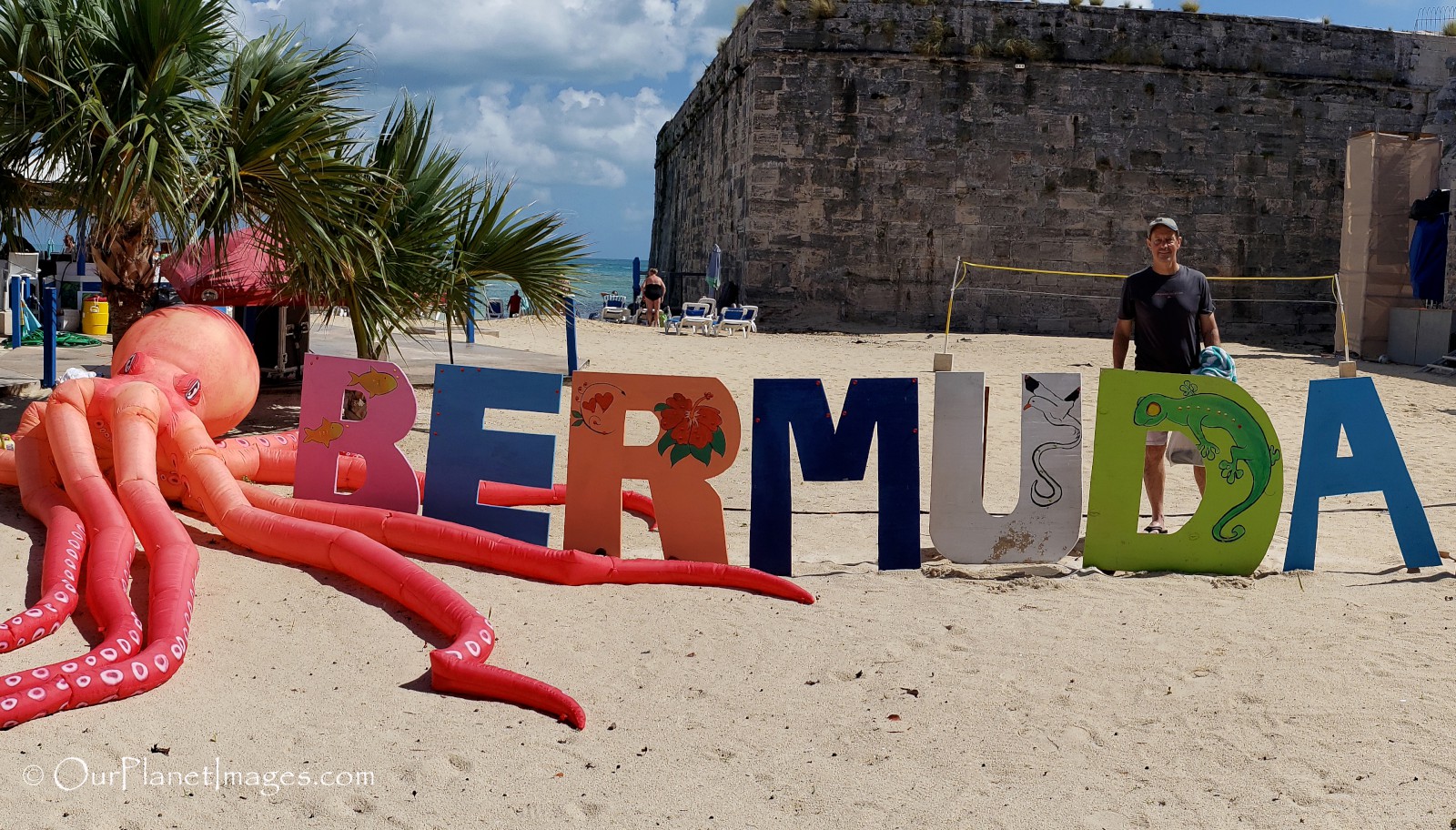
I had two great snorkeling experiences in Bermuda!
The deep-water current was a little strong so I swam into the current and then snorkeled as the current took me back to the boat that way I wouldn’t need to swim into the current getting back to the boat after I was already tired.
The water in my shallow water snorkel was a little cloudy if I came too close to swimmers but there were plenty of places where the water was clear and there were lots of fish to see.
I like to stay in a hotel with access to nice beach snorkeling location so that I can snorkel whenever I have a little free time but I may also take a snorkeling tour to a known prime location for a different experience.
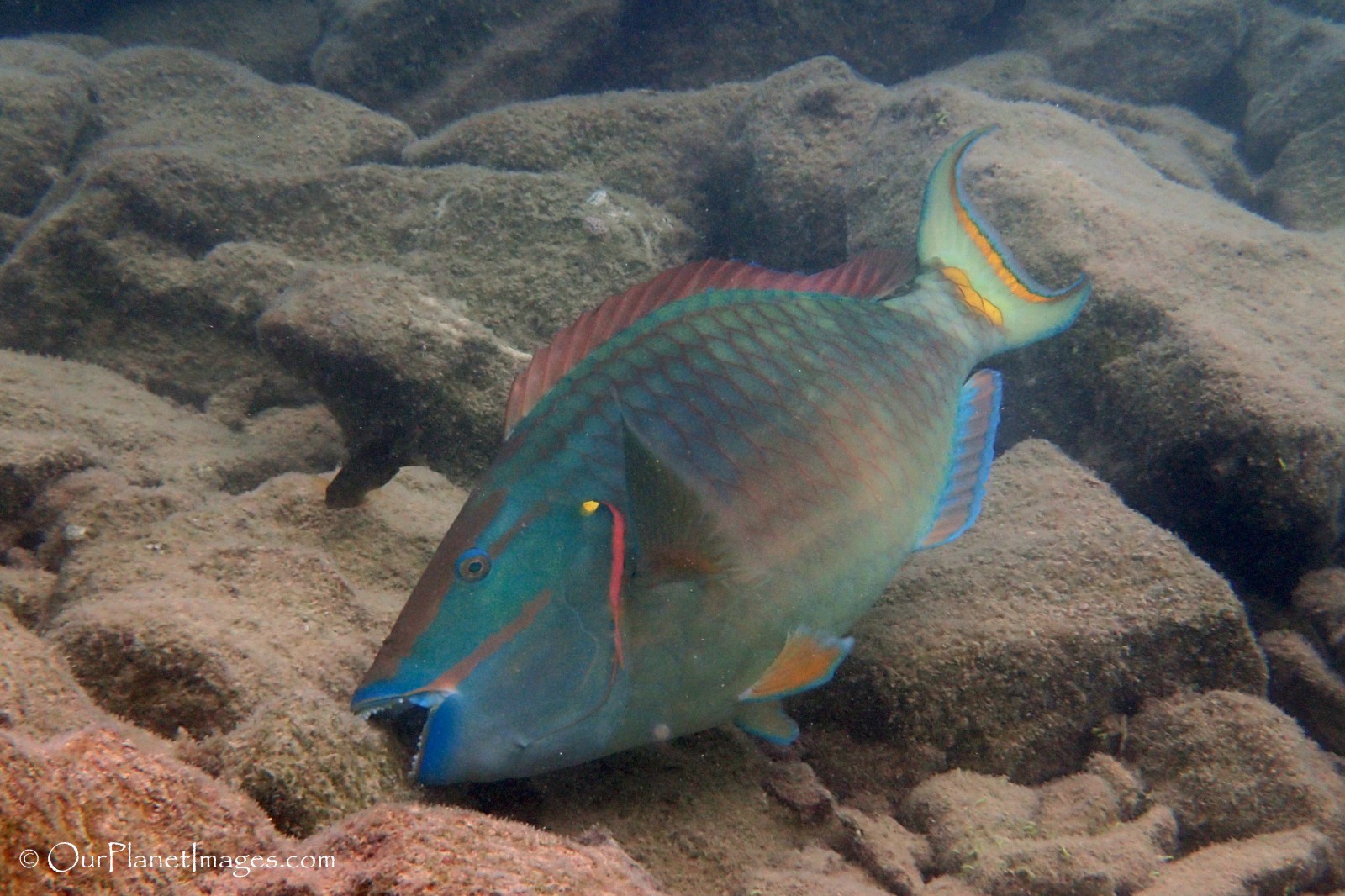
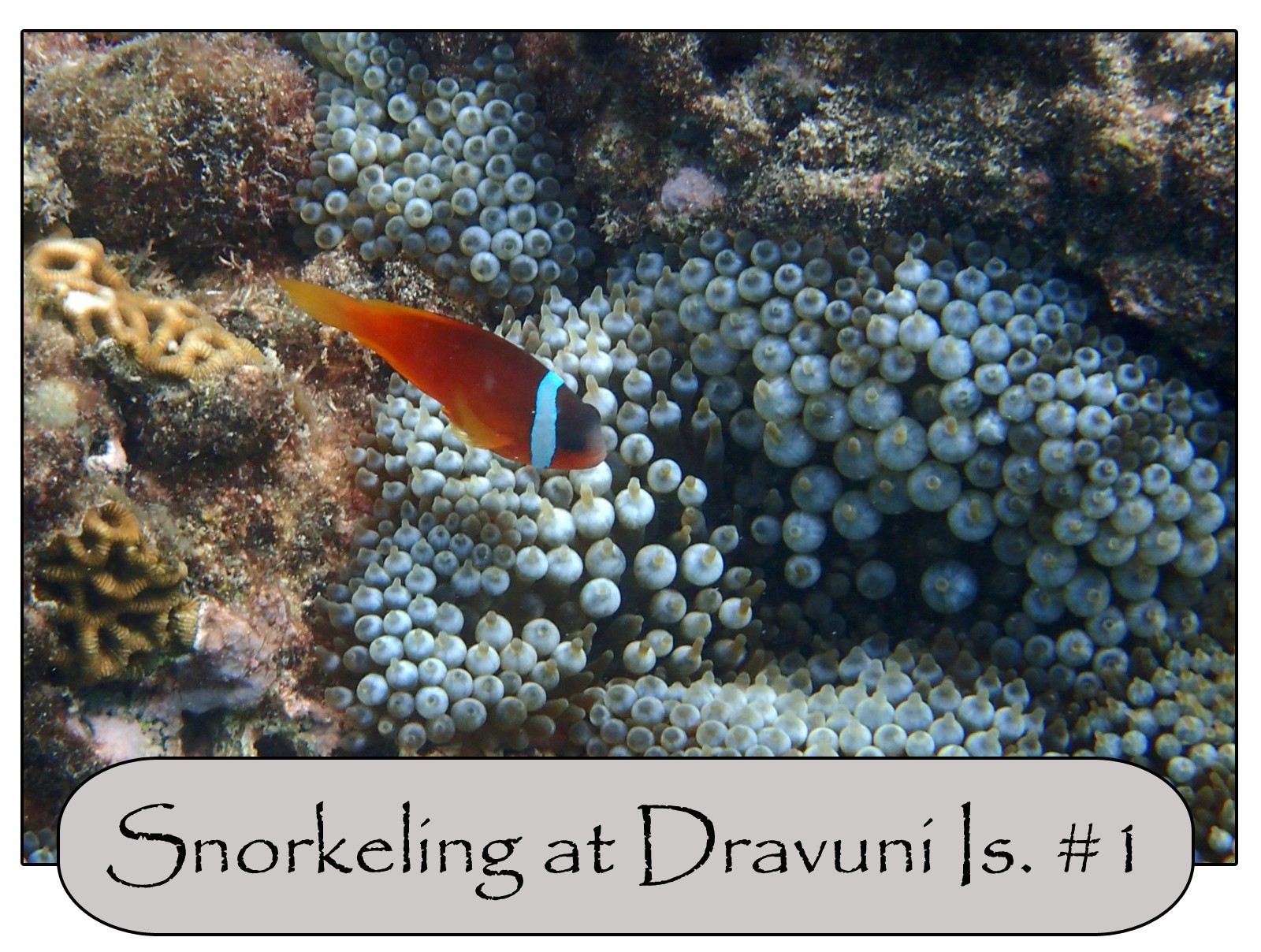
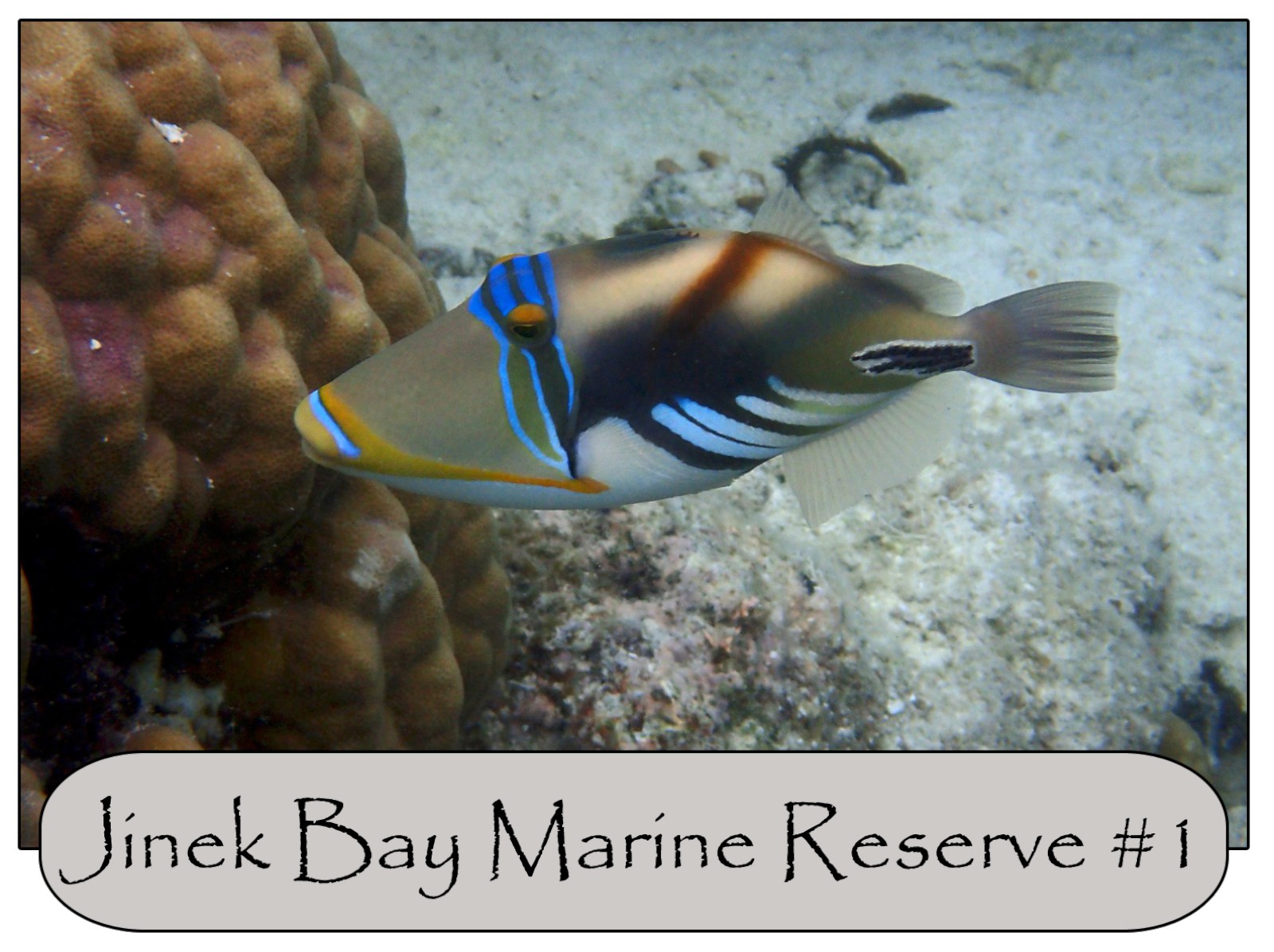
Very cool! I bet that took a while to research each type of fish from your pictures.
Thanks Kevin! Yes, it does take some time to identify the species of fish that I see during my snorkeling trips but I enjoy seeing so many unusual sights from the underwater world and I like to know what I have seen. It is an amazing and beautiful world that we live in!